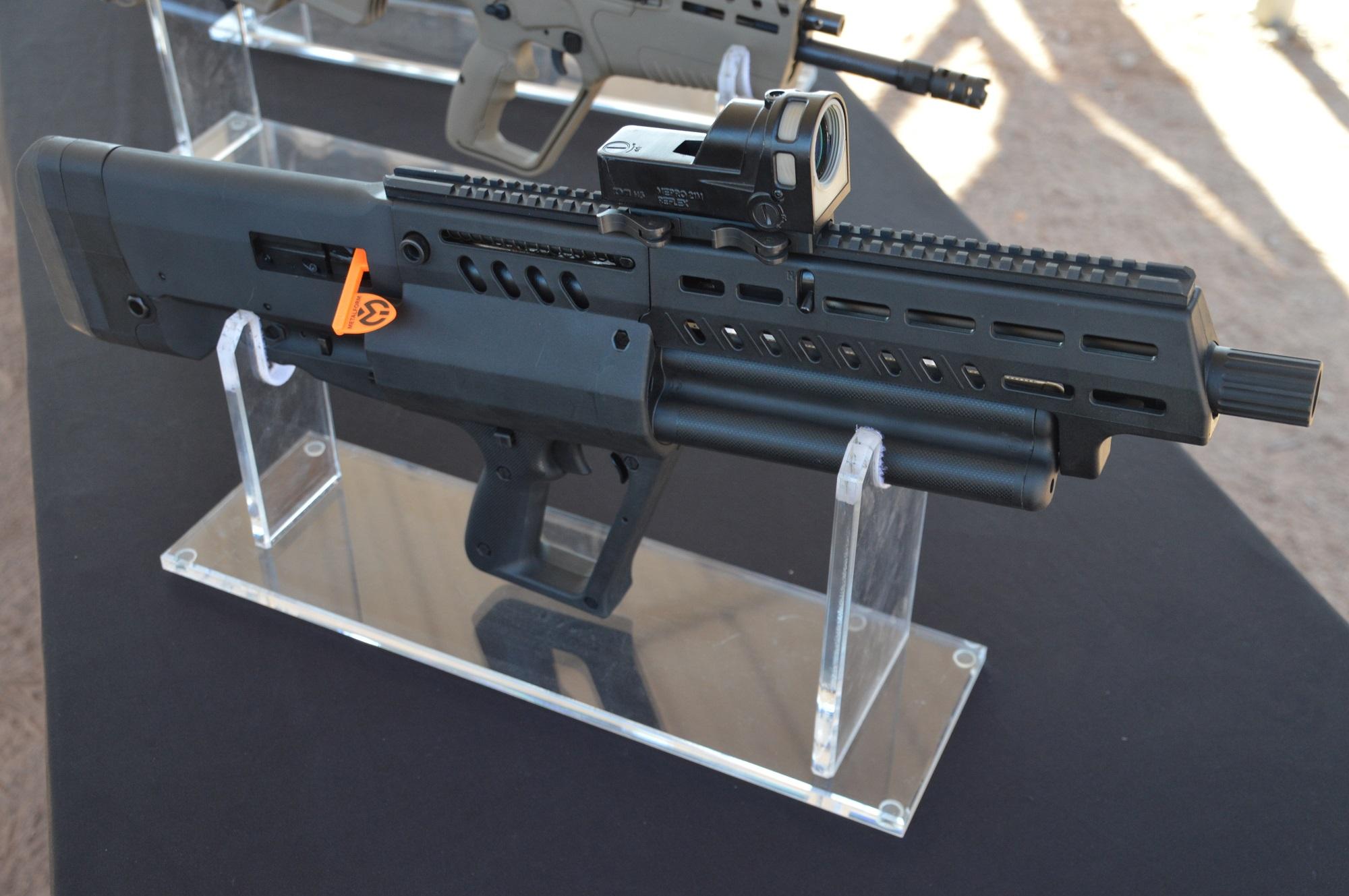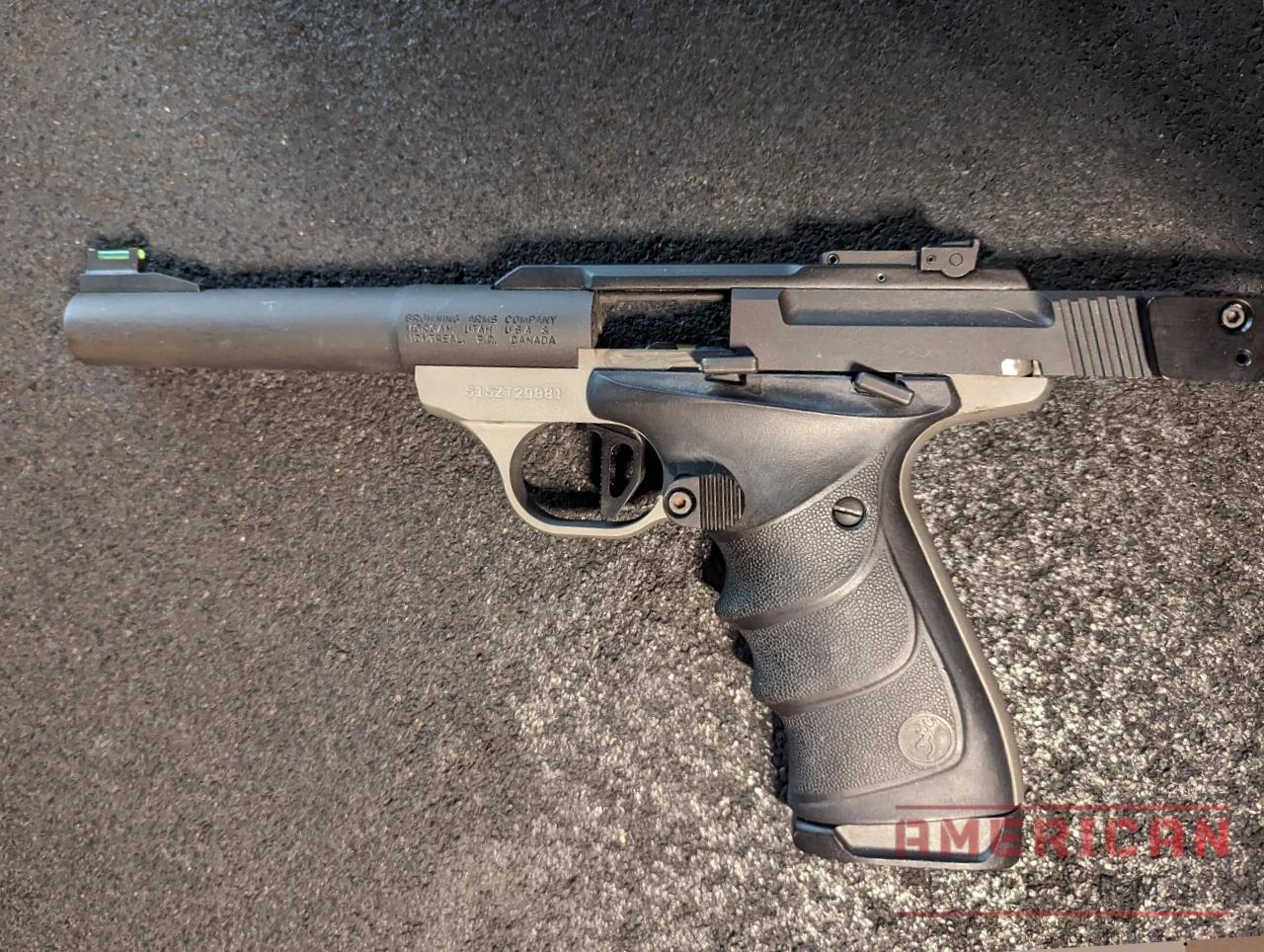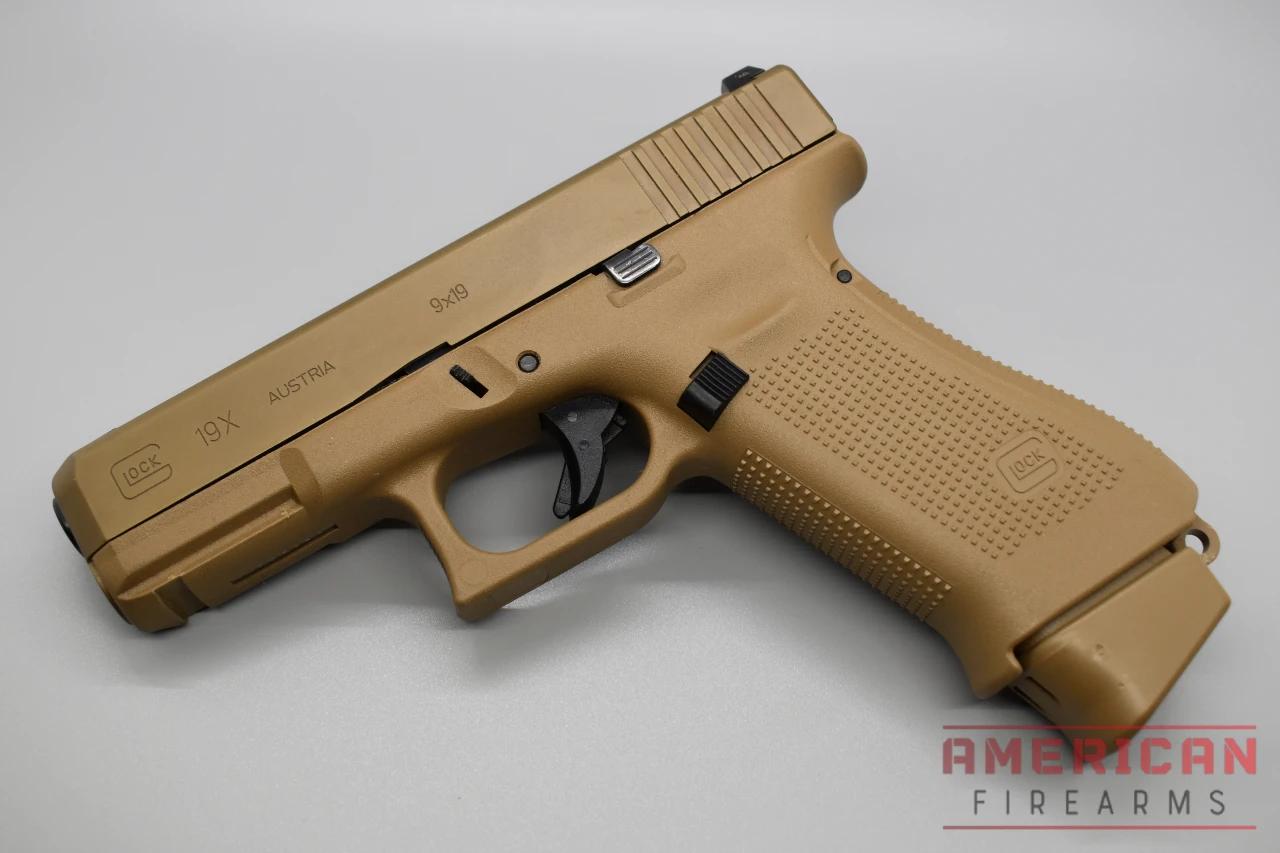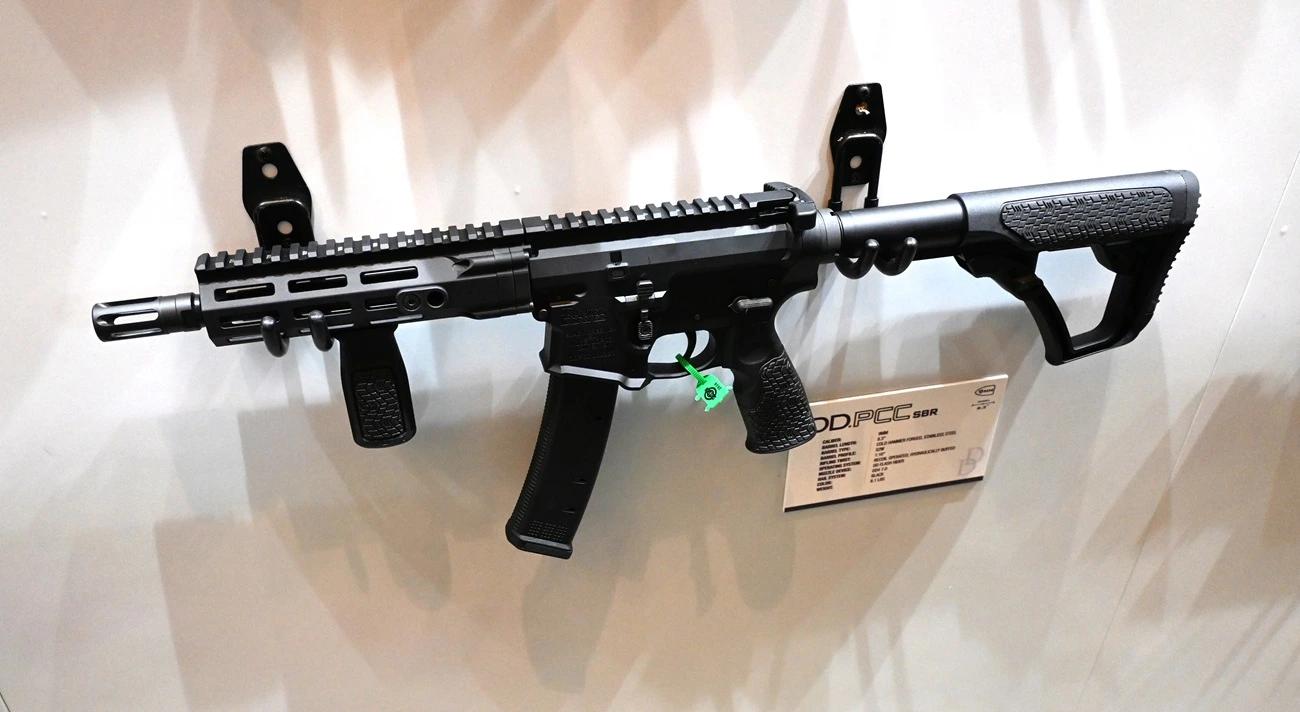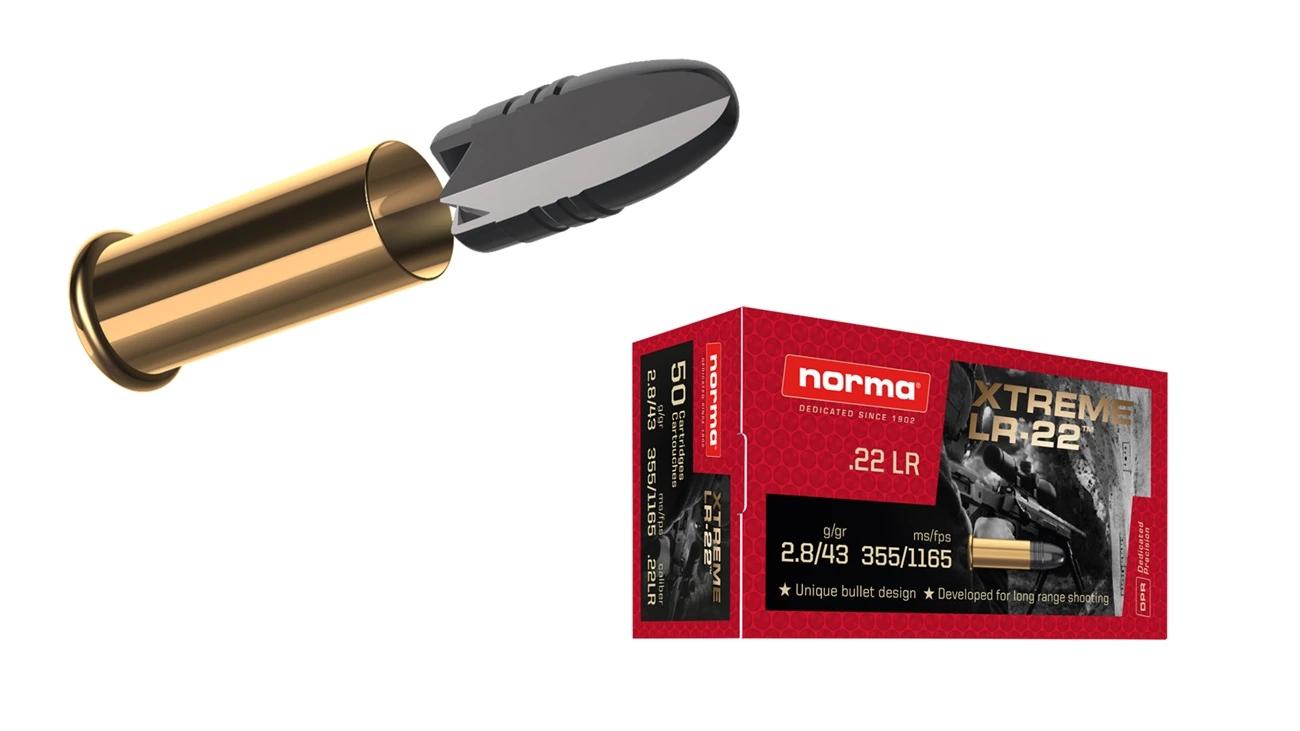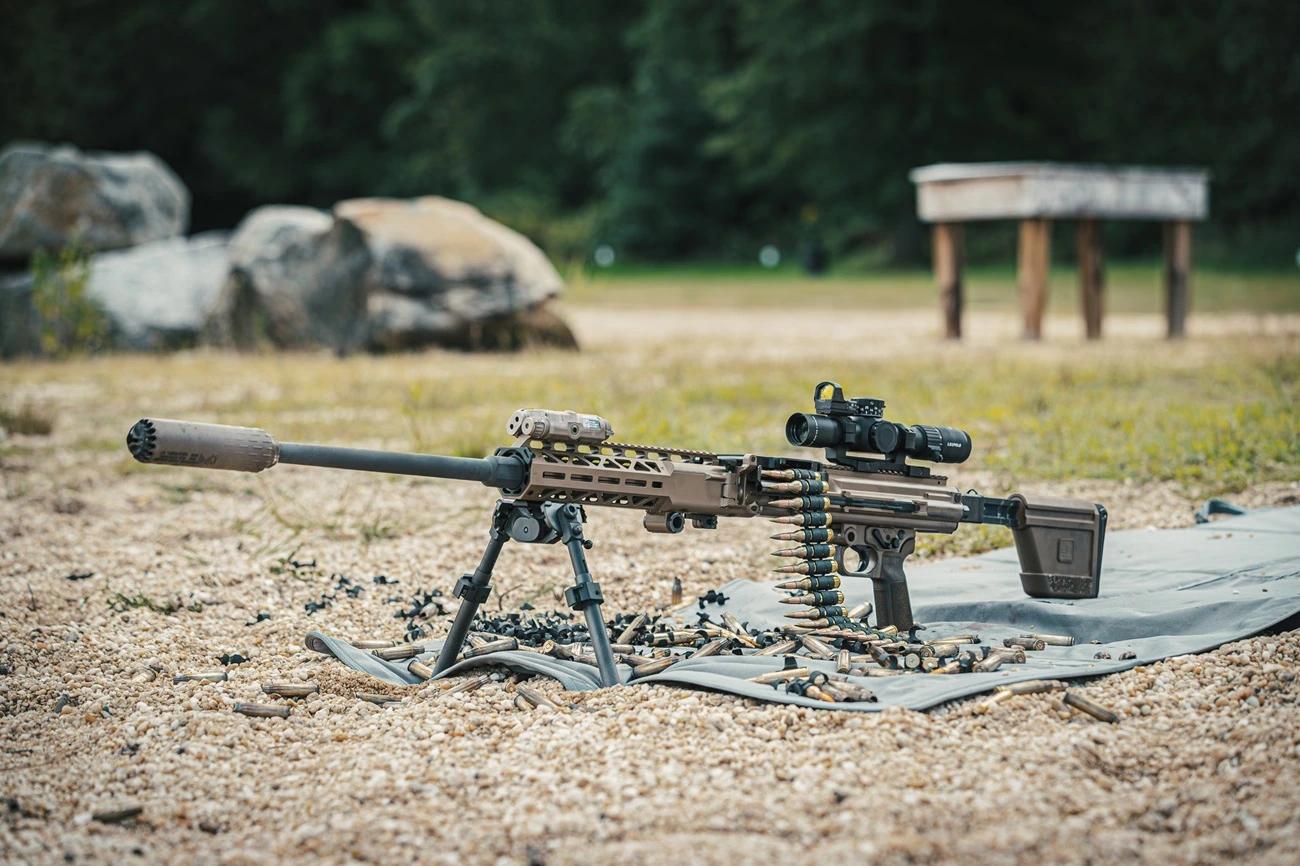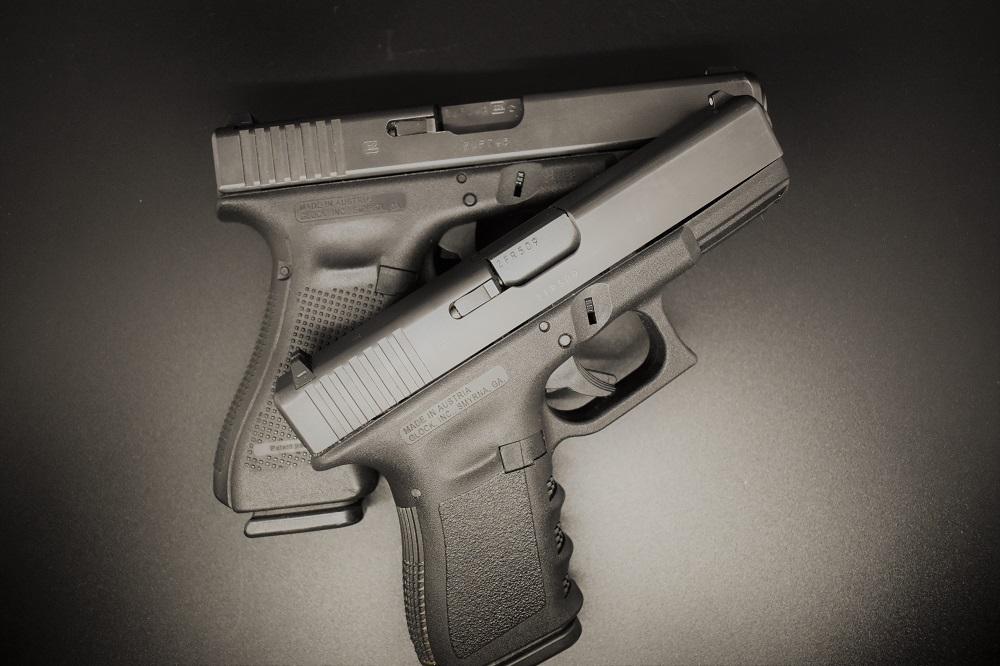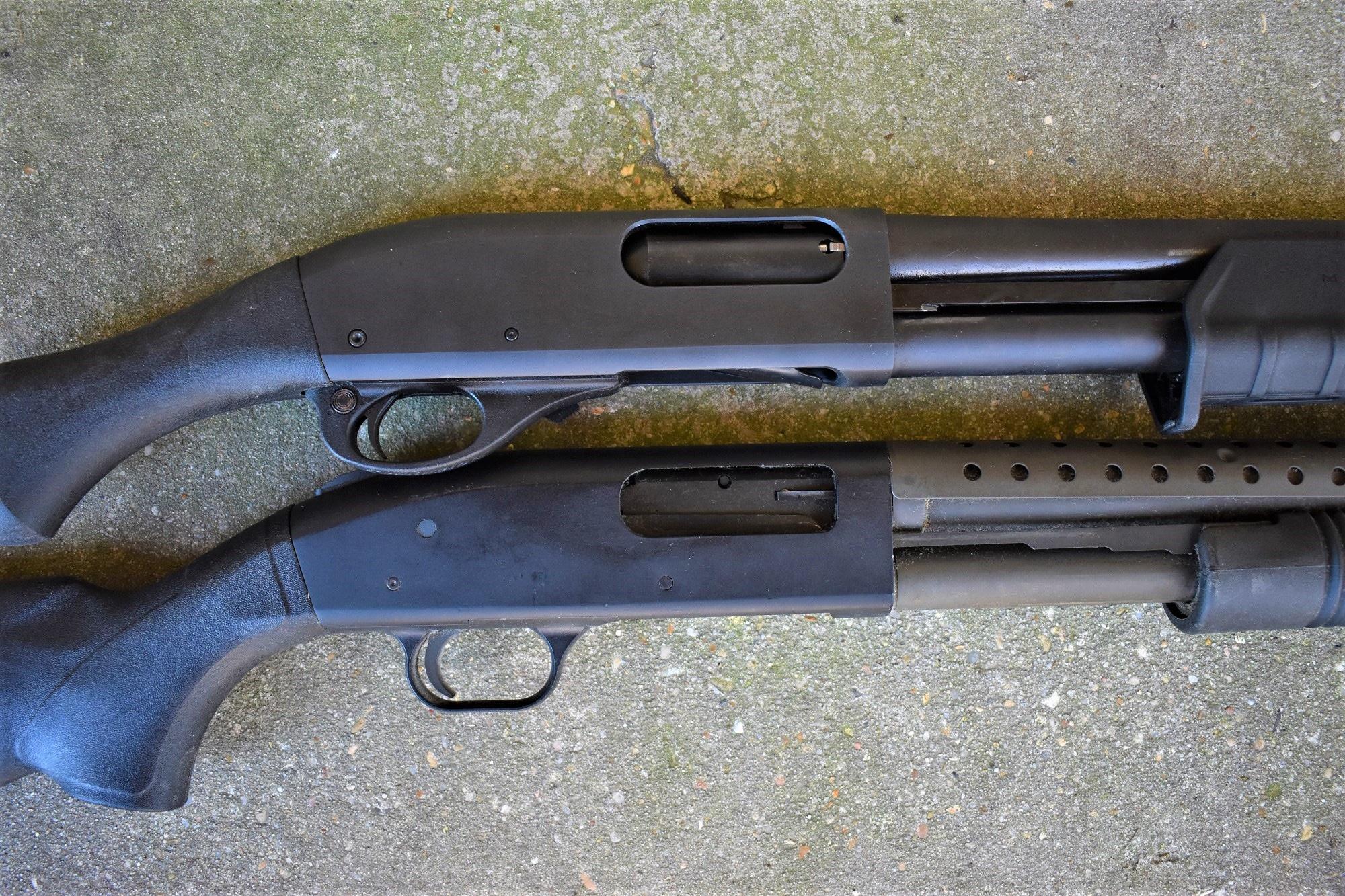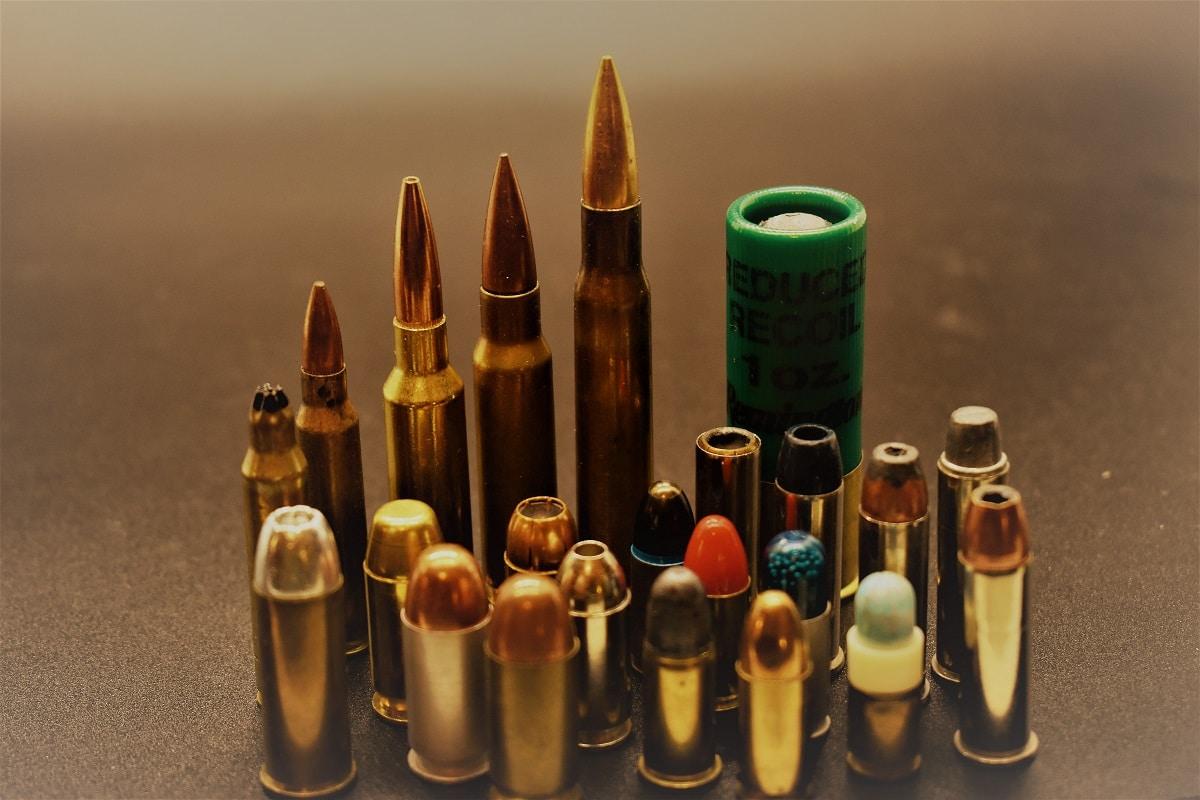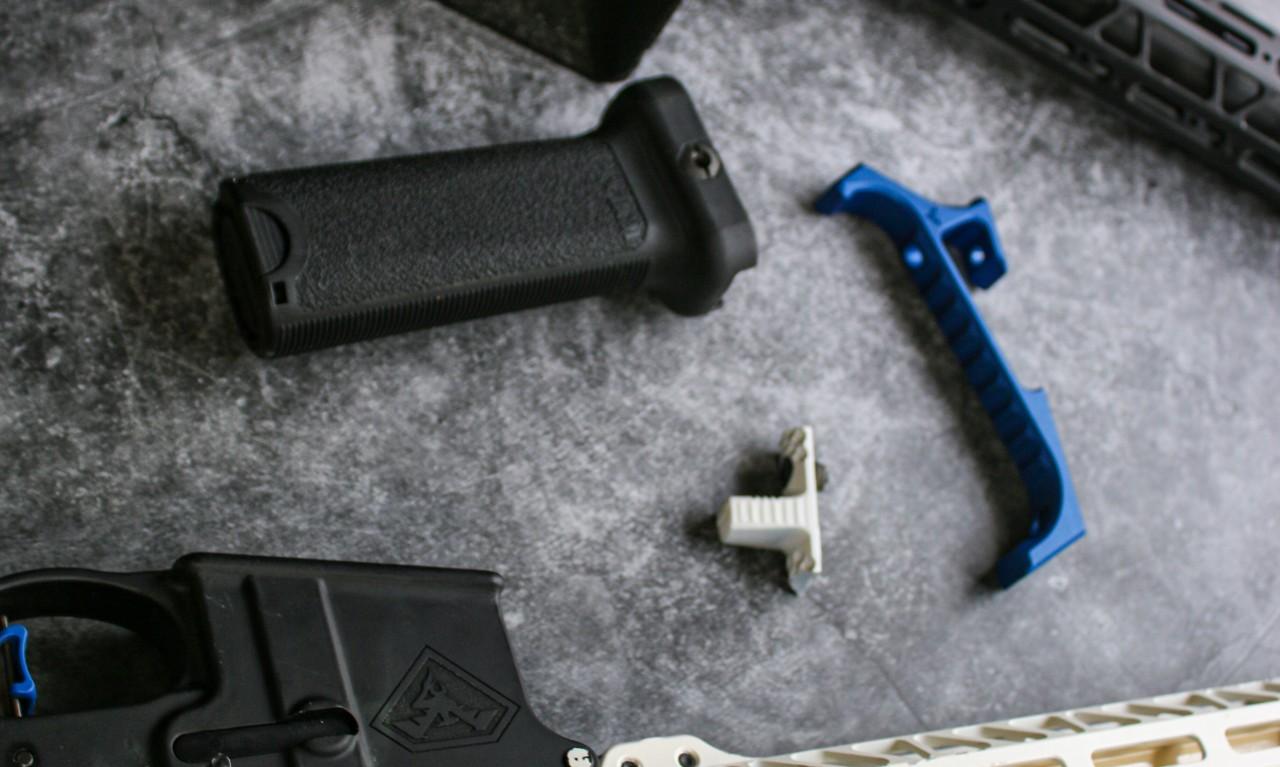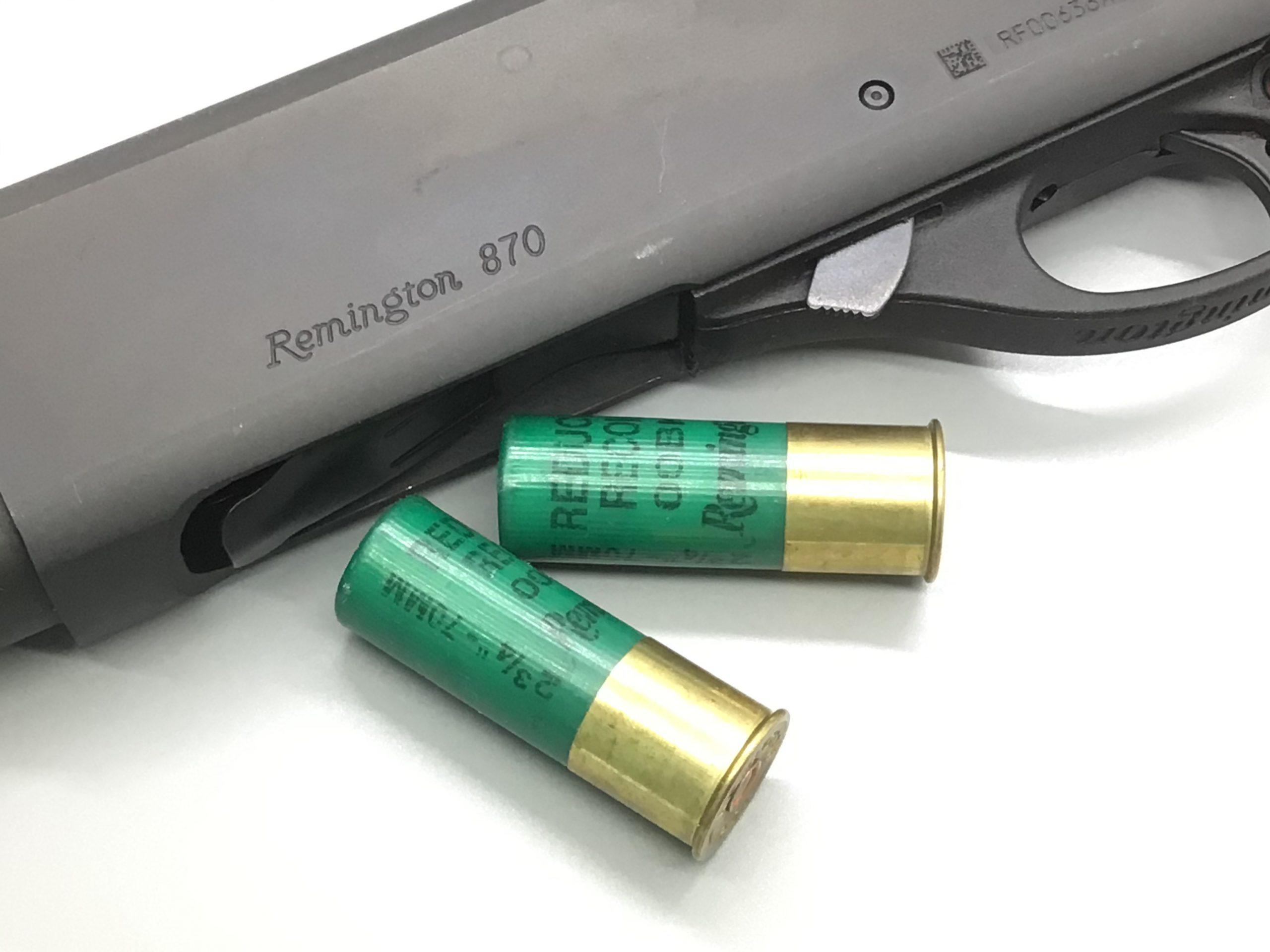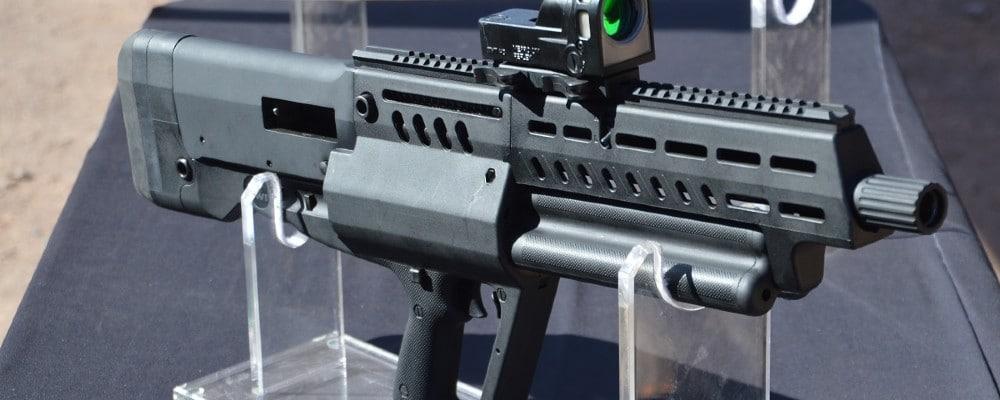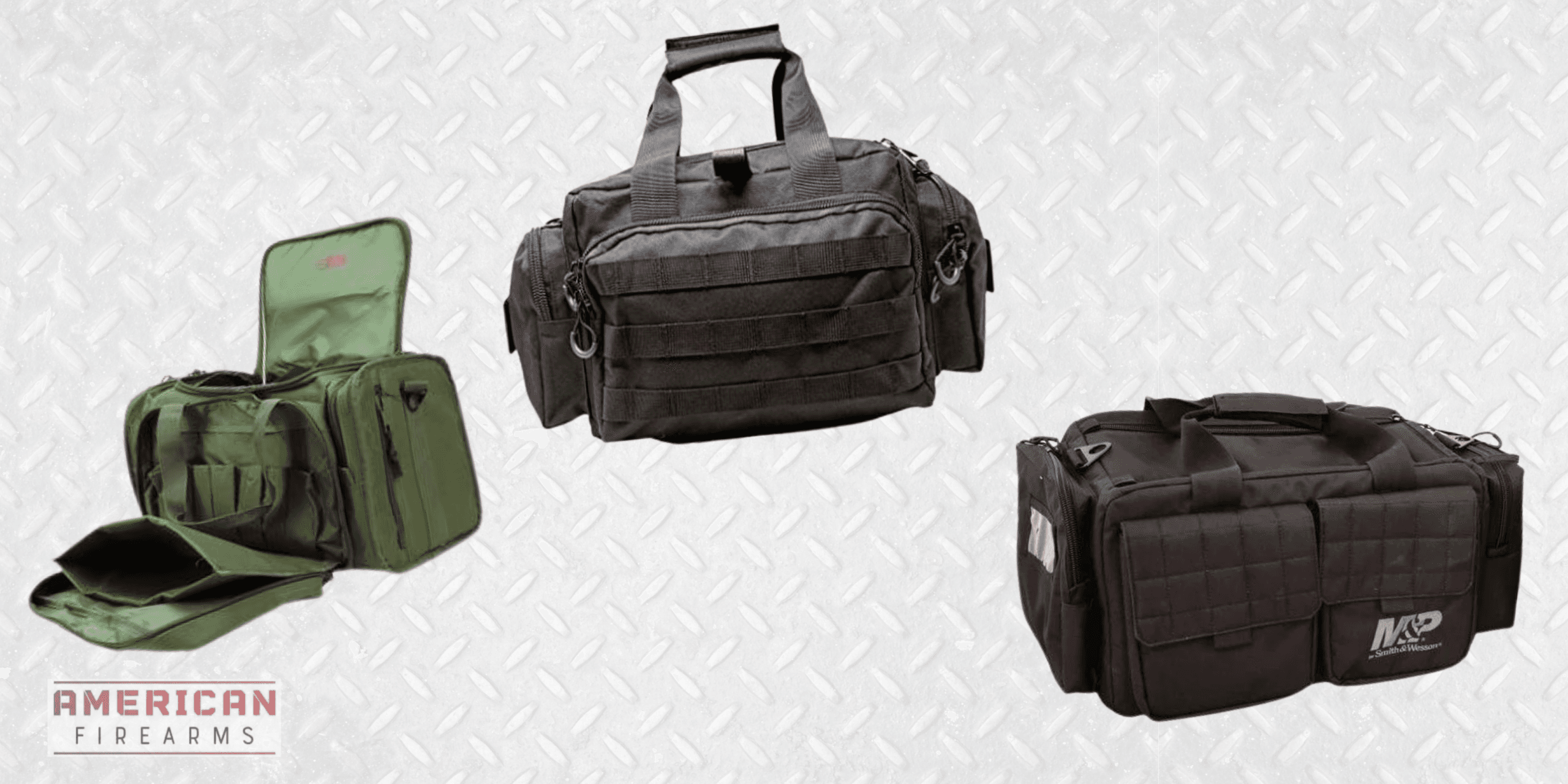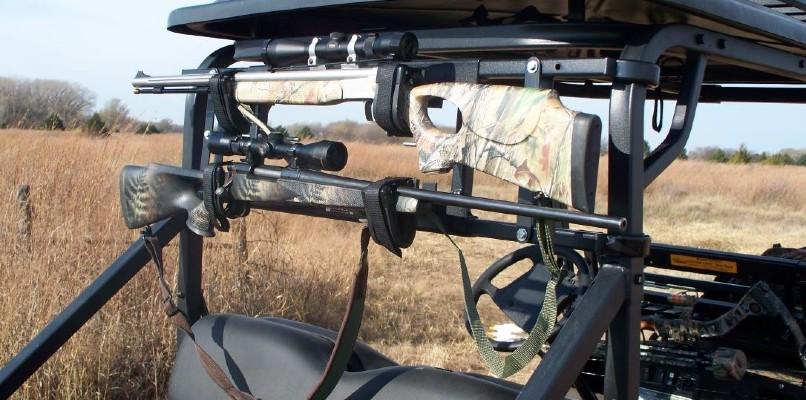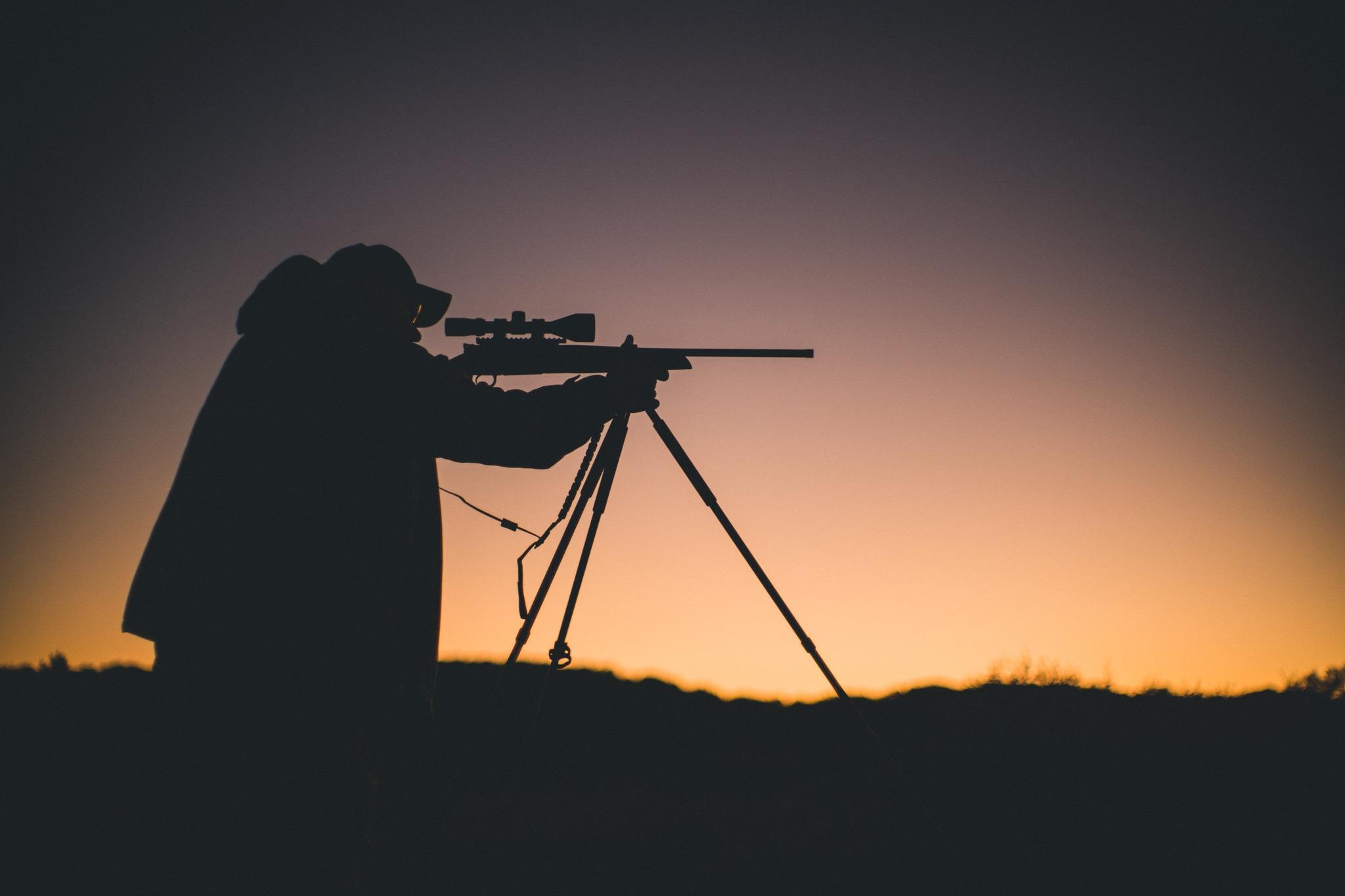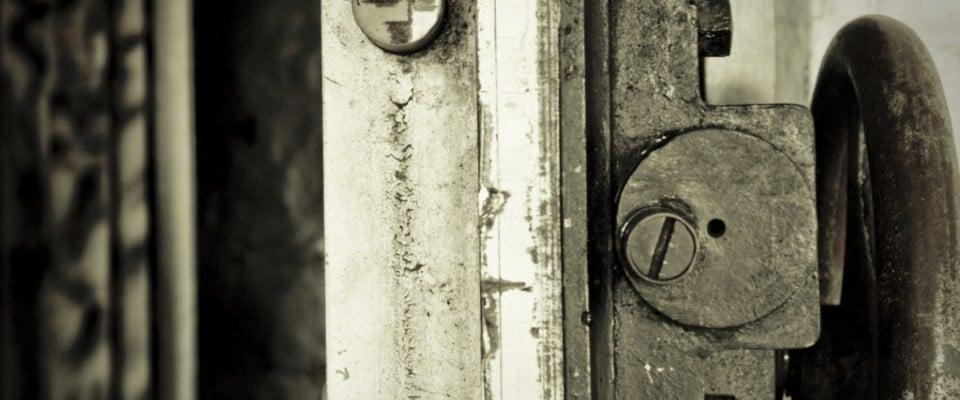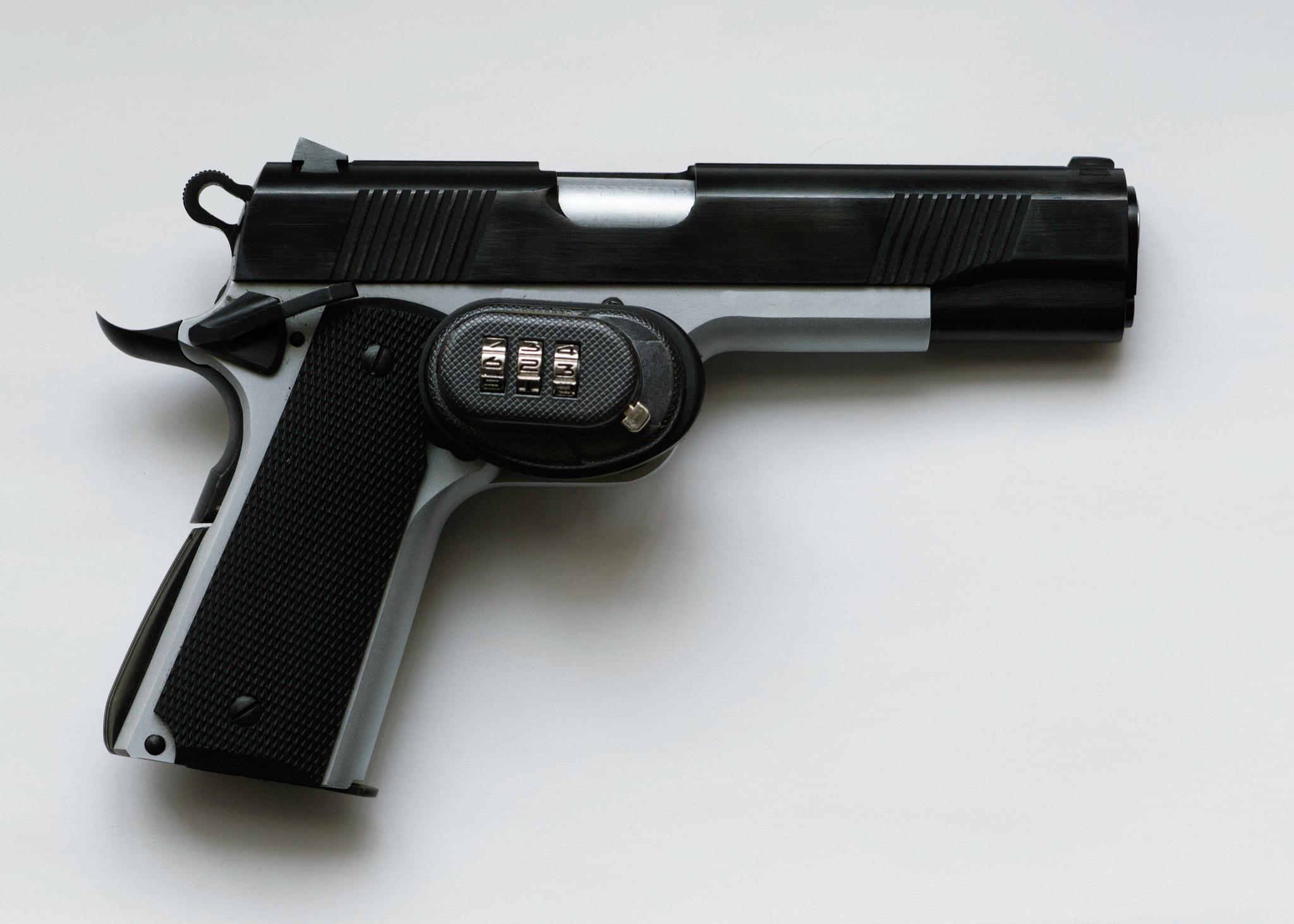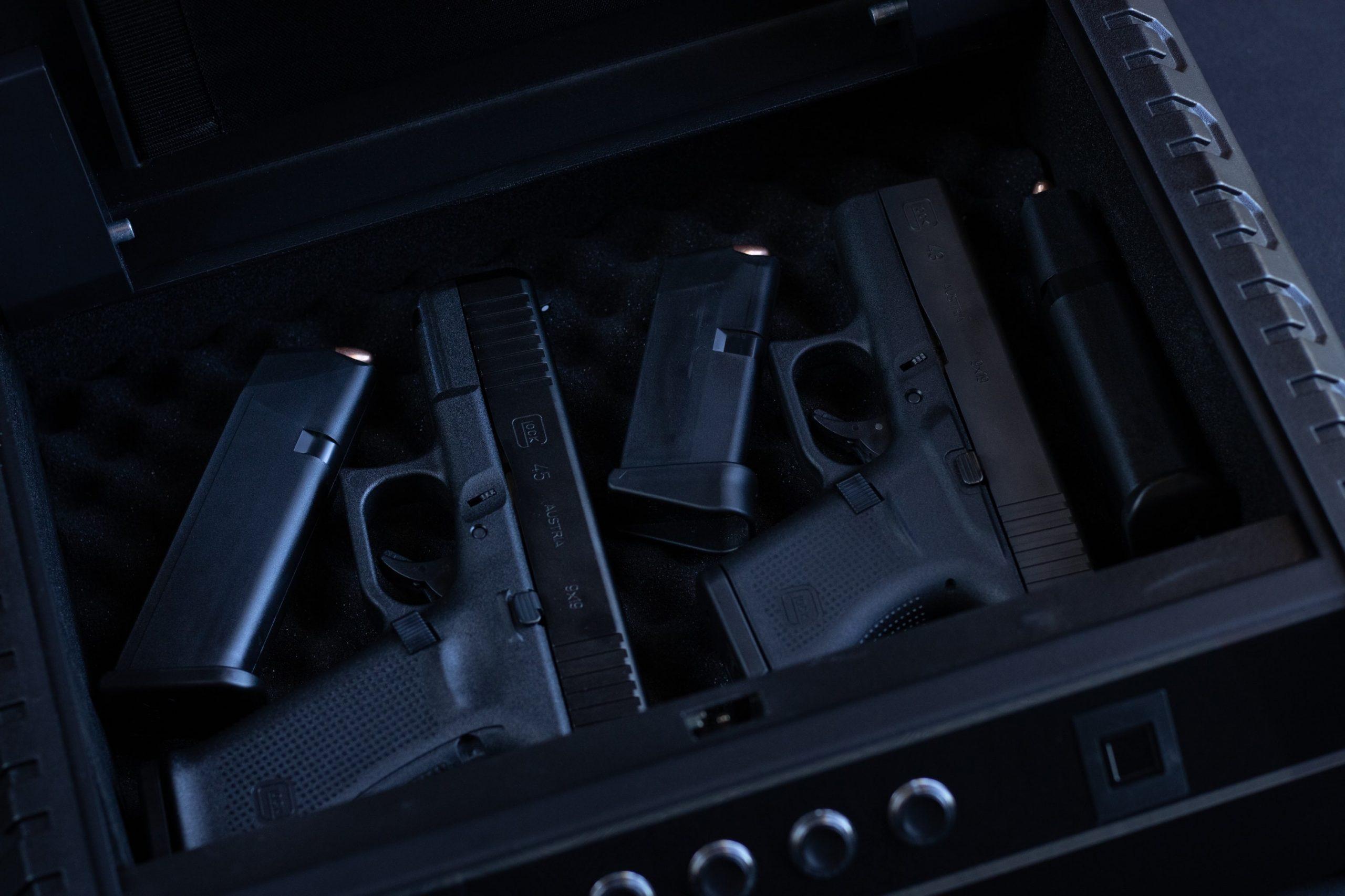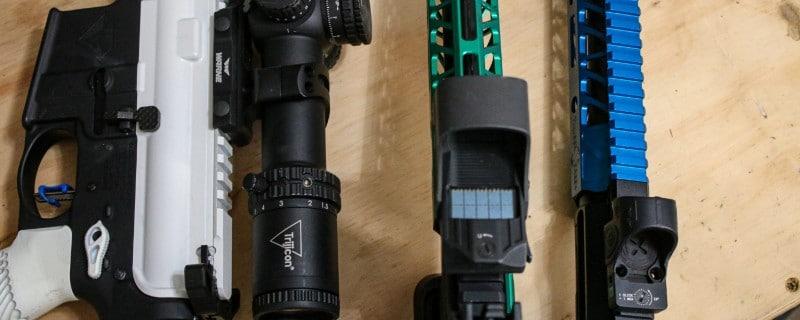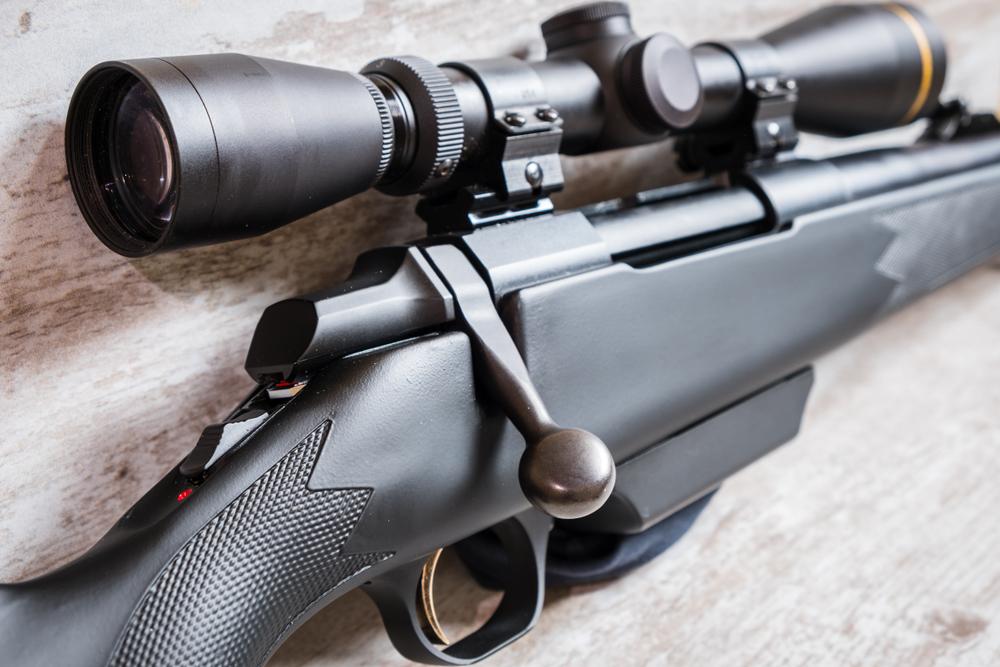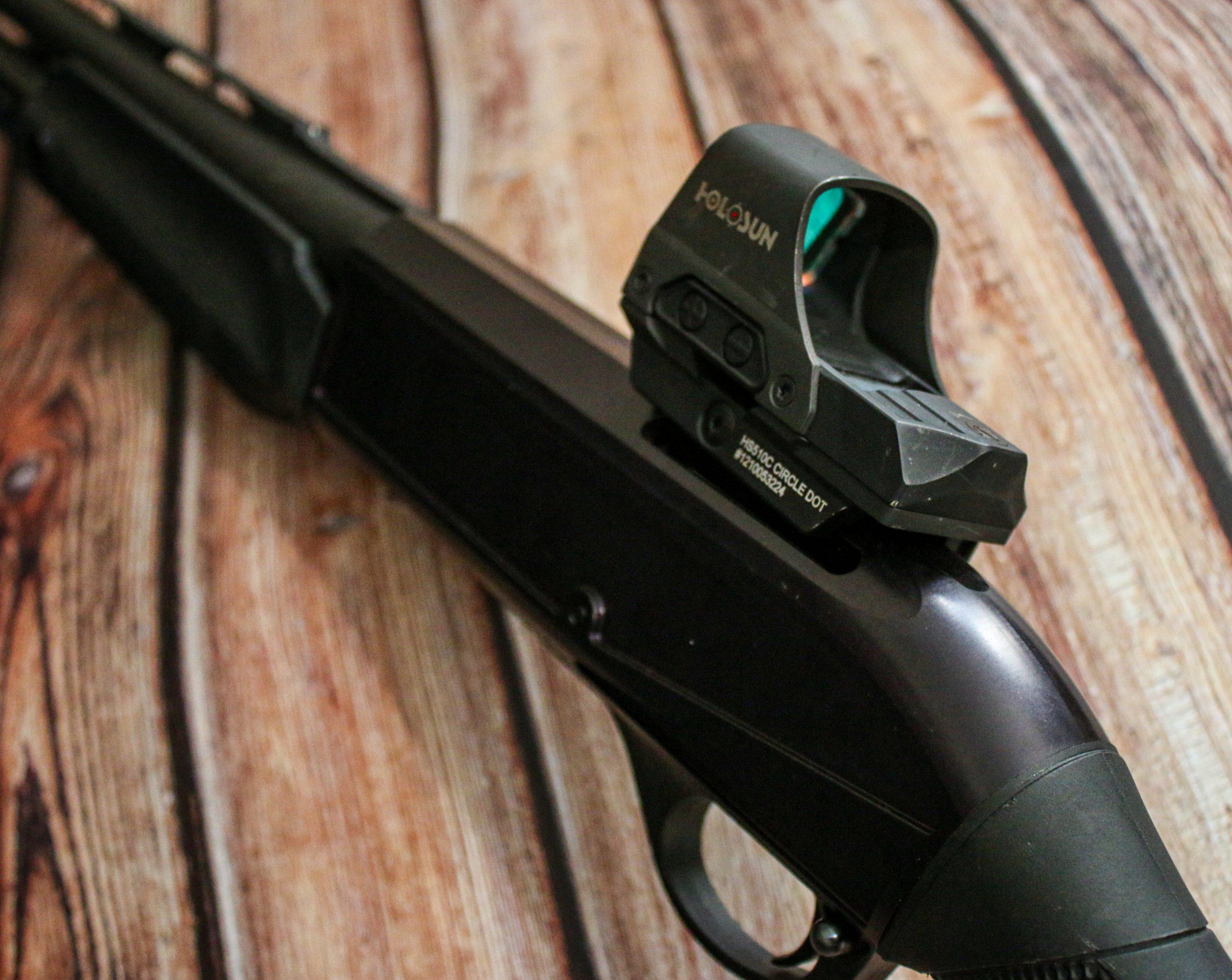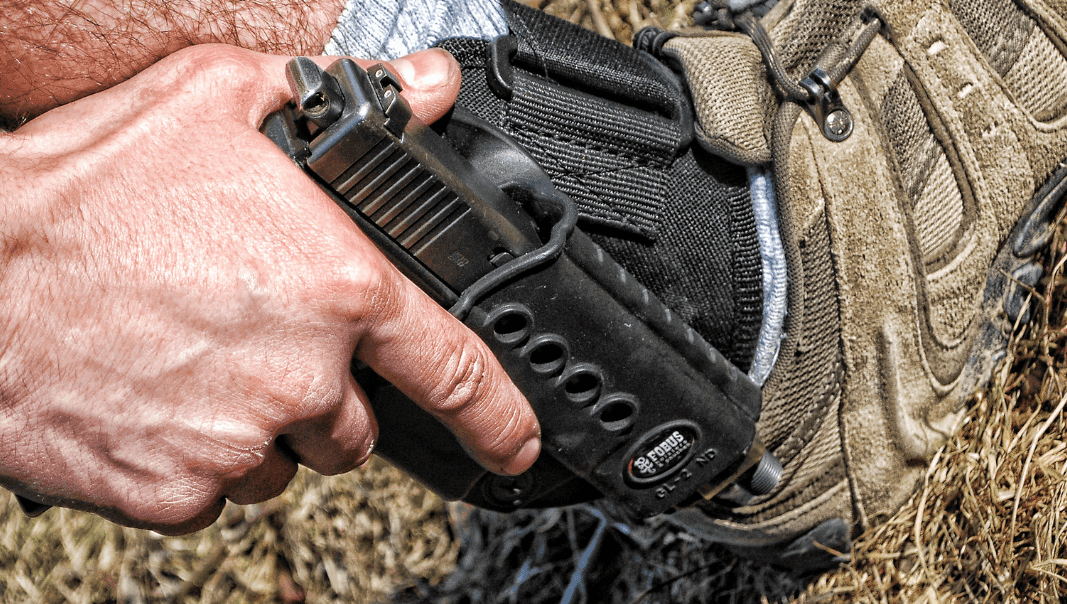The Major Gun Types: A (Long) Primer
Written By
Kenzie Fitzpatrick
Competitive Shooter
Edited By
Michael Crites
Licensed Concealed Carry Holder
Share:
Products are selected by our editors. We may earn a commission on purchases from a link. How we select gear.
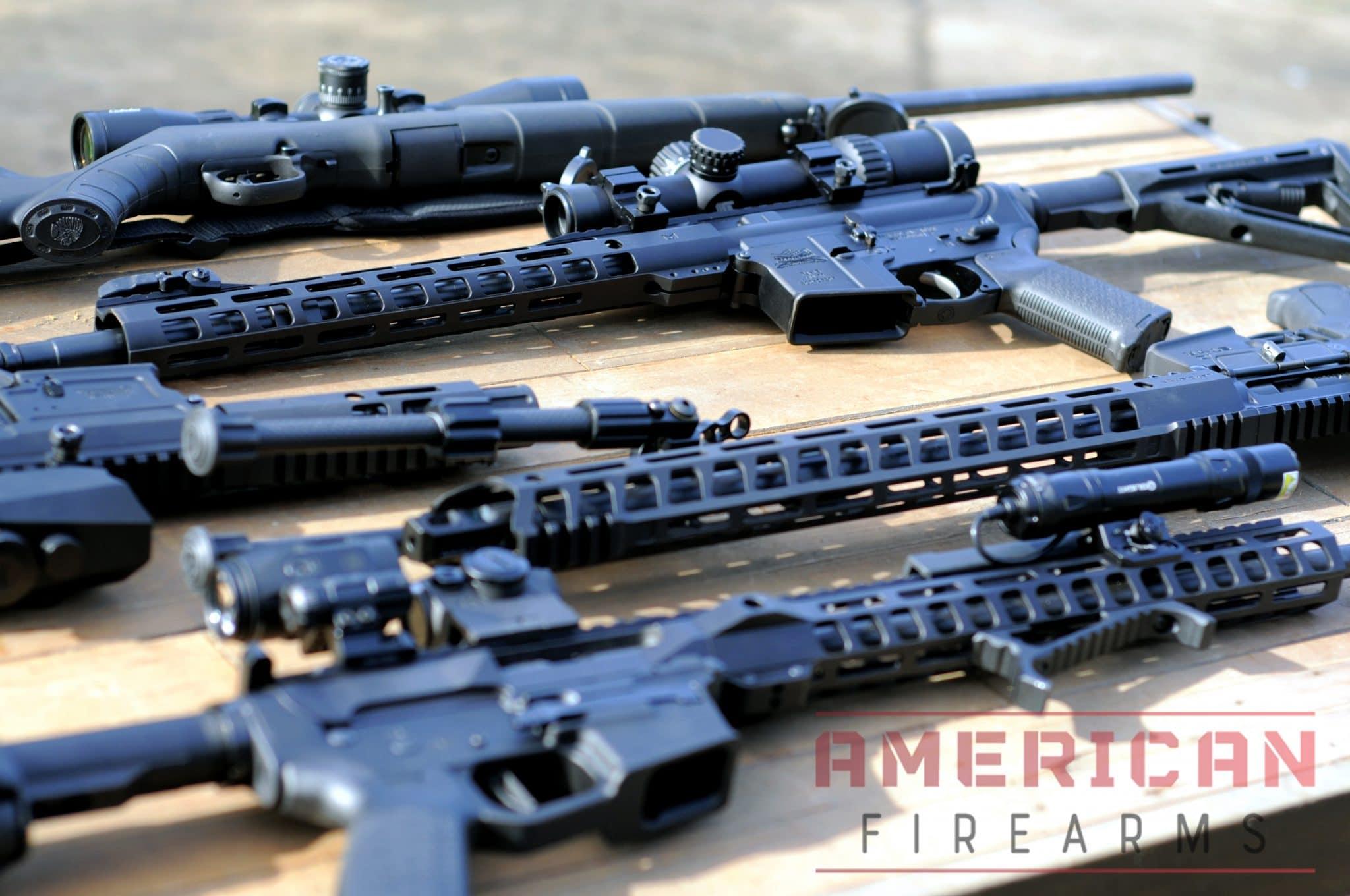
Updated
Jan 2023
The world of firearms is vast and full of many different types of guns with various actions, functionalities, and a slew of different calibers. With the variety of guns in the world today, there’s something for everyone, which is what I love most about the gun industry.
Today we’ll cover the terrain of gun types, actions, how they function, and the most popular calibers for each.
In This Article
Pistols
What is a pistol?
The ATF defines a pistol as:
- a chamber(s) as an integral part(s) of, or permanently aligned with, the bore(s);
- and a short stock designed to be gripped by one hand at an angle to and extending below the line of the bore(s).
Other words people use to refer to pistols are handguns, revolvers, or simply firearms or guns.
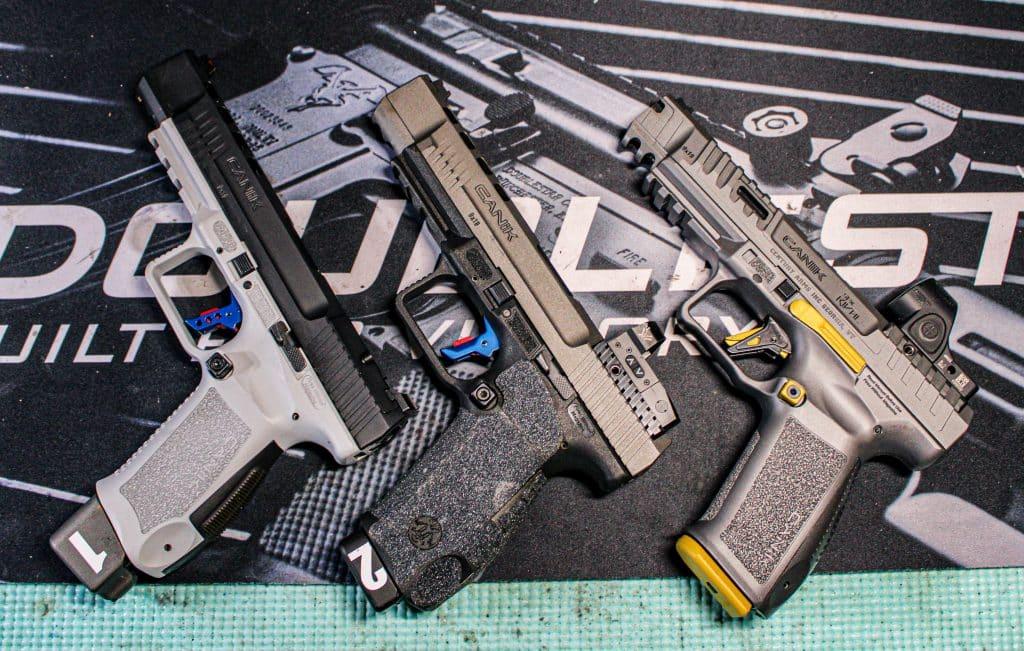
How Does a Pistol Work?
A pistol’s function differs depending on if you’re shooting a revolver or a semi-automatic pistol, but how they work in firing a bullet is similar.
When the trigger of a pistol is pulled, it drops a hammer which strikes the primer of centerfire cartridges or priming compound in the rim of rimfire cartridges. This strike ignites and burns the powder inside of the casing.
The burning gunpowder produces gasses that build pressure inside the cartridge casing — eventually overcoming the friction of the bullet resting in the case, which then pushes the projectile forward and out of the case.
The bullet rotates through the lands and grooves of the gun barrel and exits out of the muzzle. How brass ejects and the next round chambers all depend on the type of pistol you’re shooting and its action.
Semi-automatic pistols use a detachable magazine that is released with the push of a button, called a magazine release. Depending on the size and caliber of the pistol, these magazines may hold multiple bullets, giving you more rounds on tap before you need to reload your pistol as compared to a revolver, for example.
Examples of a firing mechanism are a single-action trigger, double-action trigger, double-action-only trigger (DAO), double-action/single-action trigger, and striker-fired, which we detail below.
Pistol Sizes
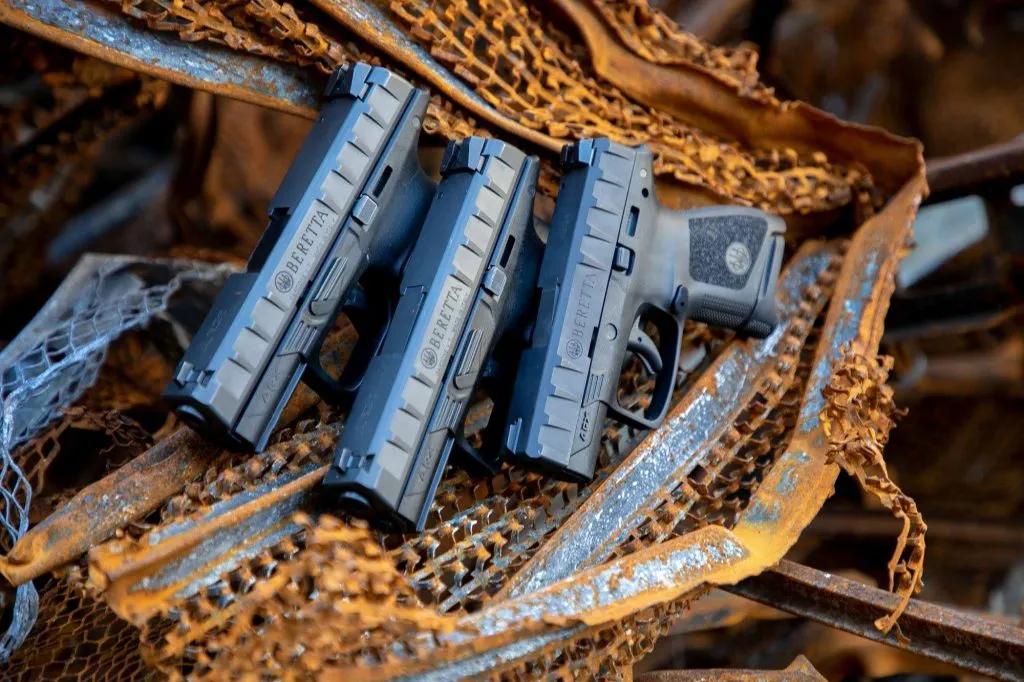
Pistols come in four main sizes, from teeny tiny pocket guns to full-size higher-capacity models, each serving a different primary purpose, with some nuances here and there.
For example, it’s important to note that one size doesn’t fit all, so if you are looking for a carry gun and a sub-compact’s smaller grip is too small for your hands, it’s completely fine to carry a full-size pistol. Just because one pistol works for a friend doesn’t necessarily mean it’ll work well for you.
Fit is important enough that many competition shooters have their pistol grips literally molded from the owner’s hand. A gun that is too big for a shooter’s hand will pass the recoil impulse to the shooter’s thumb joint and hand bones, when a proper fit passes that painlessly to the palm.
This is an area that requires an open mind and first hand experience to navigate successfully, young padawan.
Full Size
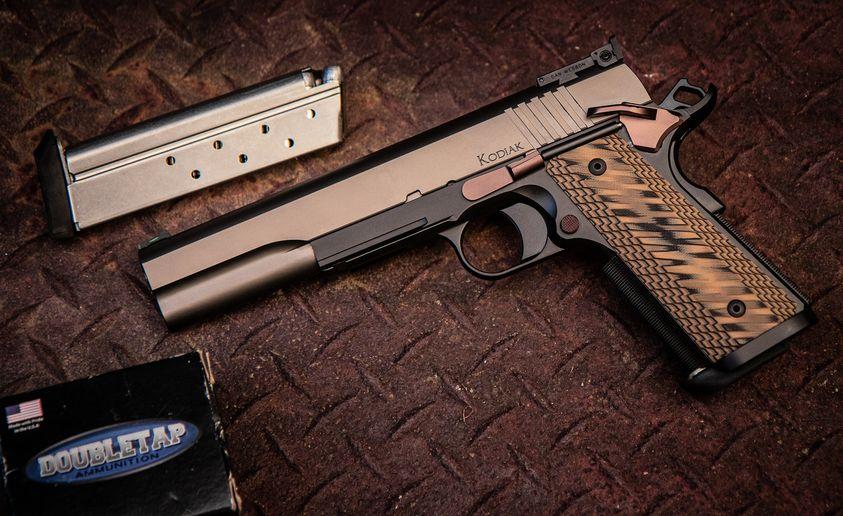
Full-size pistols are defined as handguns with barrels 4.5 to 5 inches long.
These firearms often allow for the most amount of grip space, giving many their preferred purchase on the gun, but can sometimes be too big for certain hands. Full-size handguns also have the largest capacity of the various pistol options and are consequentially the most difficult to conceal.
Compact
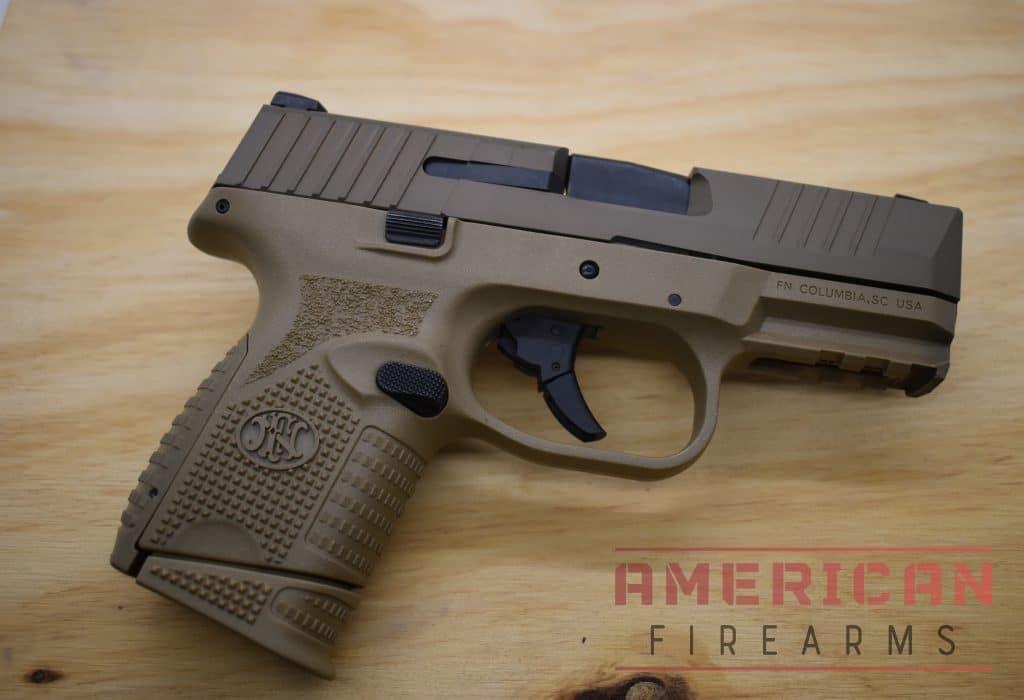
Compact pistols are one size down from full-size. These gun barrels are between 3.5 and 4.5 inches long, with the biggest adjustment from full-sized guns being shorter grips which lower capacity.
The compact category is popular enough that many firearm manufacturers will produce a full-size and compact variant of the same firearm — two almost identical models of the same gun with different size grips.
Sub-Compact
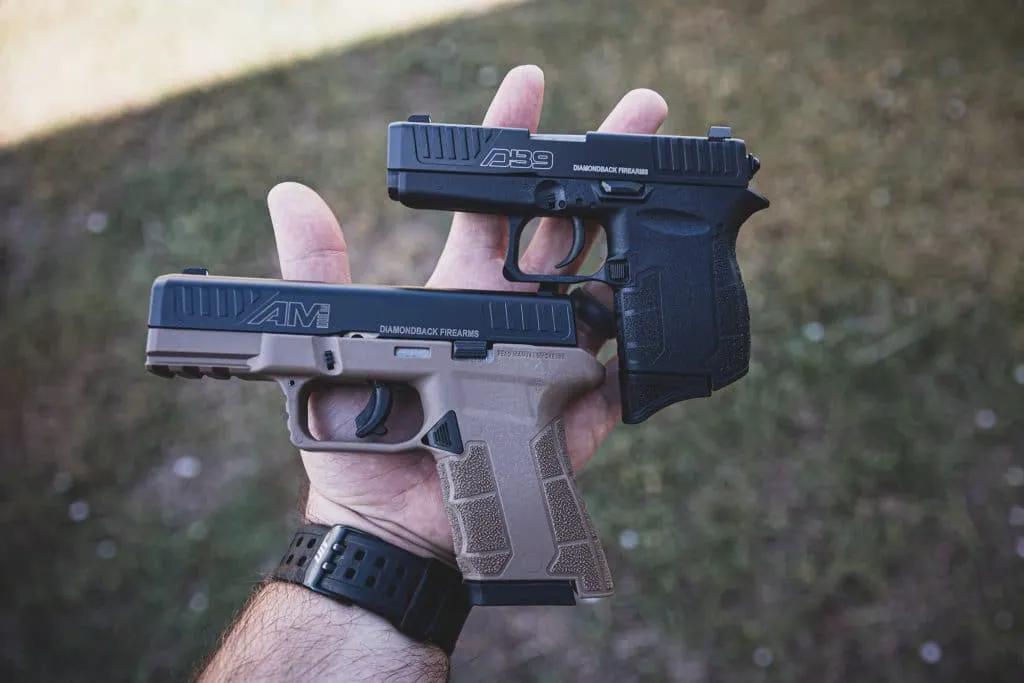
Sub-compact pistols are the realm of most carry guns. The barrels of these guns are 3.5 inches or less, with grips which tend to be much shorter and slimmer, often doing away with double-stack magazines for a single stack sticks — making these much easier to conceal but sacrificing capacity in the process.
Micro/Pocket
Micro-compact and pocket pistols are extremely small guns, often smaller than one’s palm. The barrels are no longer than 3 inches, making them concealable in most common pant pockets.
While a pistol that is too small is easier to deal with than one which is too large, micro and pocket pistols tend to be tough to shoot accurately because their short, lightweight design means their tiny grips are ergonomically challenging, and they tend to pass a sharp recoil impulse to the shooter’s hands, which biases these little poppers to smaller calibers.
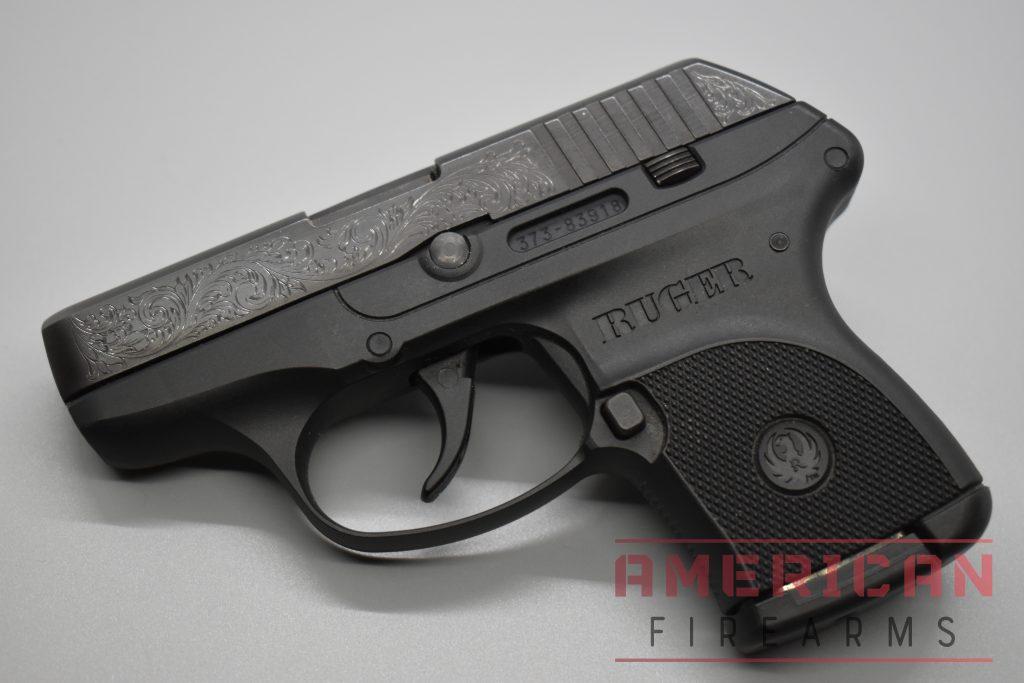
Actions
Double Action
“Double action” refers to how the trigger functions. With one pull of the trigger on a double action, the pistol performs two tasks. It both pulls the hammer backward and releases it — letting it fall to begin the firing sequence.
What tends to confuse folks is, unlike revolvers, many semi-automatic pistols don’t have a visible external hammer — so these two tasks are happening inside of the gun. Double-action semi-auto pistols usually include a “decocker” mechanism, which allows the hammer or striker to return to a safe position without firing the chambered round.
Striker-Fired
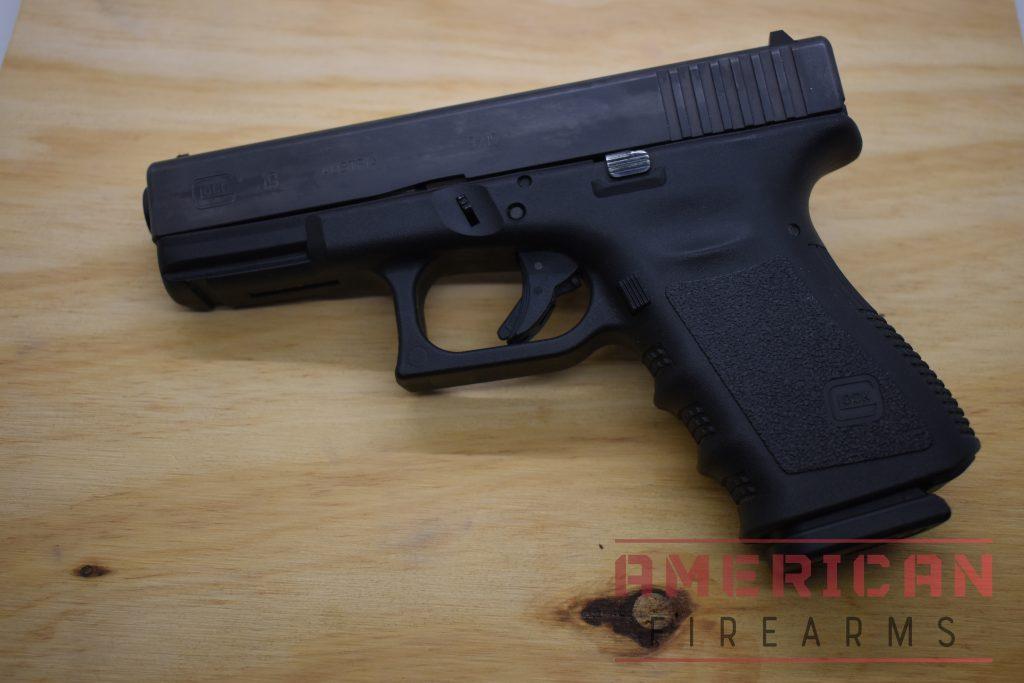
Striker-fired semi-automatic pistols have been the most popular and widely used guns on the market for decades. These are your Glocks, Smith & Wessons, HKs, Caniks, and more commonly known pistols.
With striker-fired pistols, there is no hammer. The typical sequence involves pulling the slide back and letting its forward return, loading the first round. This process puts the firing pin under spring tension, and when the trigger is pulled, releases the tension, which jerks the firing pin forward and ignites the cartridge’s primer in the chamber. Thus, pew.
Semi-auto pistols, like Glocks, can feel like single-action firearms because of their light, short-travel triggers. In truth, they’re double action only (DAO) because the striker isn’t fully cocked when the slide is shifted rearward – that only creates pretension. Pulling the trigger fully cocks the striker just before it’s released.
Popular Pistol Calibers
Handguns are chambered in a tremendous number of calibers and cartridges, and regardless of the type of shooting you intend to do, there’s a round for it.
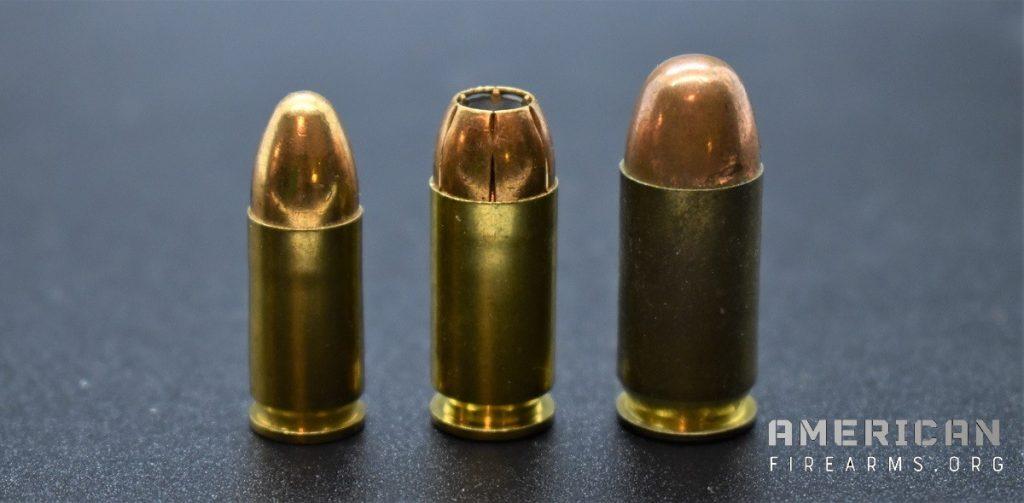
Rimfire
Rimfire cartridges were the first type of self-contained metallic cartridges, and they contain the priming material in the hollow casing rim, which is where the firing pin lands to fire the cartridge — hence “rim fire”.
Current rimfire cartridges include:
- .22 Short and .22 Long Rifle (with LR being the single most manufactured cartridge on the planet)
- .22 Winchester Magnum Rimfire (or .22 WMR)
- .17 Hornady Magnum Rimfire (or .17 HMR)
- .17 Hornady Mach 2 (or .17 HM2).
Centerfire
Rather than a hollow rim, centerfire cartridges use a metal cup (called a “primer”) to contain their priming mixture in the center of the case head. When firing pin strikes the primer, the resulting spark is directed through a hole under the primer and ignites the powder charge.
The most popular pistol cartridges are:
- 9mm (the most popular caliber in the world and a military standard since 1985)
- .380ACP
- .45 Auto (or .45ACP)
- .40 & S&W
Others include the 10mm, .45 GAP, & 5.7x28mm, and the new .30 Super Carry, each designed for specific applications.
These bullet calibers are the most heavily manufactured and widely available on ammunition shelves today.
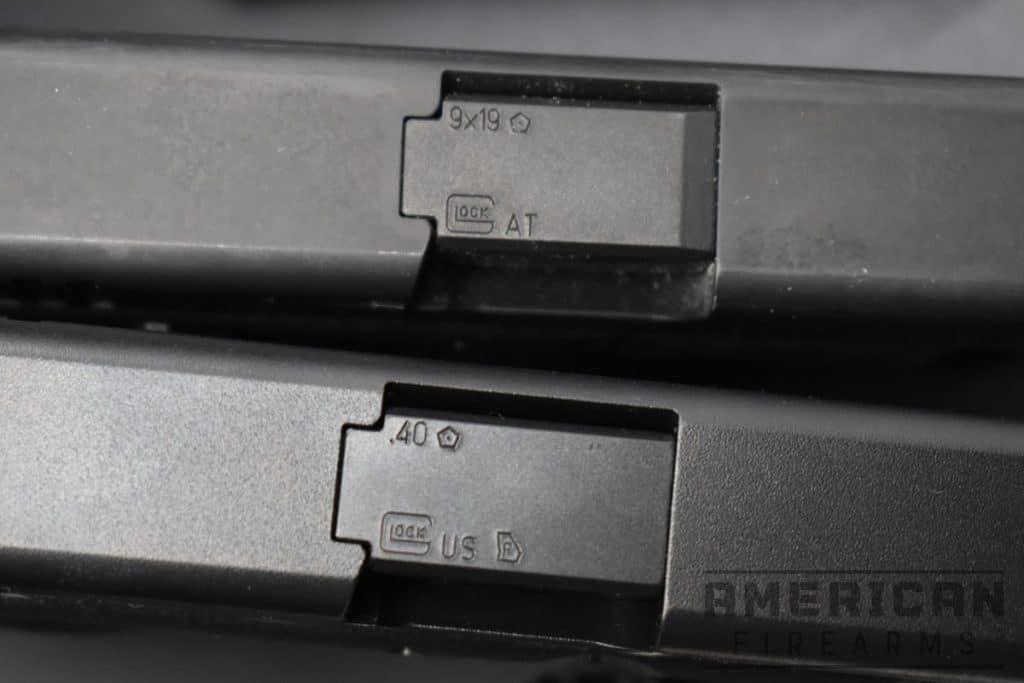
Uses
The uses for pistols are practically endless. Semi-automatic pistols very popular for self defense purposes, whether as a concealed carry gun or for home defense, although not all semi-automatic handguns make for great concealed carry pistols.
Carry pistols should be comfortable to wear all day, easy to grip with an action that’s easy to manipulate, and concealable in whatever clothing you plan to wear.
Some people hunt with semi-automatic pistols as well. Handguns chambered in .45 ACP, or 10mm are good hunting and bush guns because of the bullet weight, diameter, and stopping power. Revolvers are more popular for hunting with their powerful rimmed calibers such as the .44 Magnum and .357 Mag, but a semi-automatic can also get the job done.
Pistols are also used in numerous shooting competitions across the world. Handguns are used in IPSC, USPSA, 2 Gun, 3 Gun, Bullseye, Bianchi Cup, Steel Challenge, and other types of competitions.
Semi-automatic handguns are by far the most popular kind used in competitions like these, but revolvers also have their place amongst the competition crowd.
Revolvers
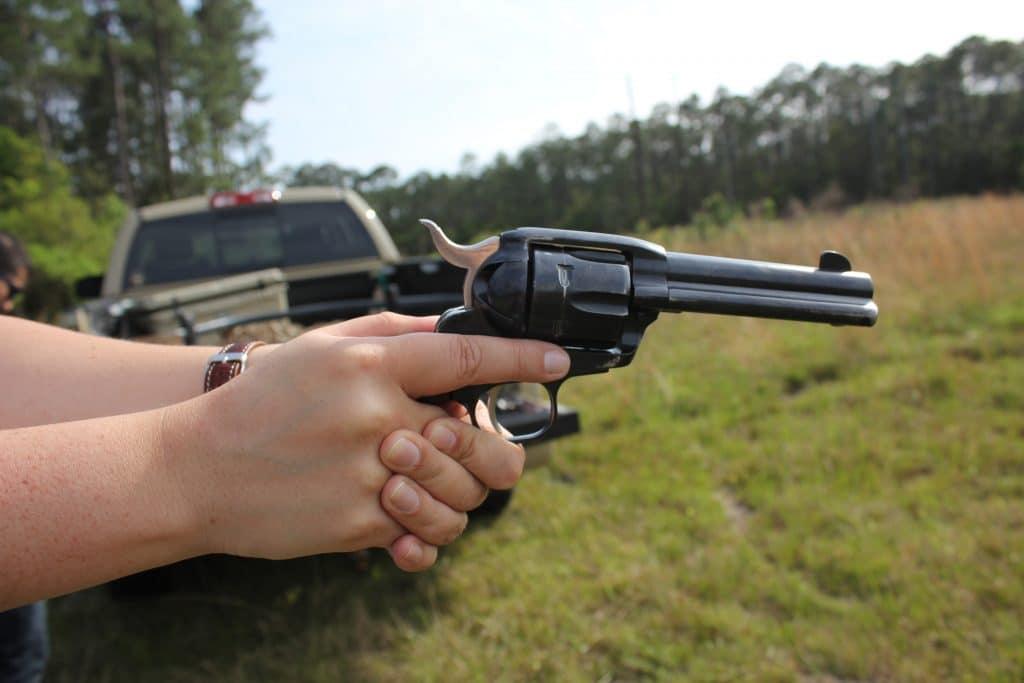
While the revolver predates semi-autos and striker-fired pistols by decades, they’re far from outdated. A revolver is a pistol that has a rotating cylinder that holds a specific capacity of rounds. The cylinder has multiple chambers, each holding a single projectile. Revolvers can also be called wheel guns or six-shooters, but can also be referred to as pistols or handguns
How Does a Revolver Work?
A revolver has a fixed frame and barrel paired with a revolving cylinder that moves in a single direction when the trigger is pulled (which direction depends on the specific gun model). The cylinder holds a limited amount of ammunition, often five or six rounds, depending on the caliber.
Each time the cylinder rotates, it aligns a round with the barrel to “chamber” a round. The trigger pull drops the hammer onto the primer (or priming compound) of the chambered round and fires the projectile.
After the round is fired, the revolver’s action determines what happens next.
Actions
Single Action
The simplest type of revolvers, single action revolvers are easy to identify and simple in their function. Single action revolvers have an external hammer that needs to be manually cocked (or “thumbed”) for every single shot you want to fire. The trigger of a single-action revolver performs a single function — dropping the hammer.
Once you pull the trigger on a cocked single-action revolver and fire the round, pulling the trigger again does nothing. You must begin the cycle again: pull back the external hammer, which rotates the cylinder, “chambering” the next round before a single action revolver can fire a consecutive round.
Double Action
Double action revolvers work similarly to double-action semi-automatic pistols. With a single trigger pull, the cylinder rotates, a round is “chambered”, the hammer is cocked and then released to fire the round. A double-action revolver does all of the work for you.
There are two types of double action revolvers: double action and double action only (DAO).
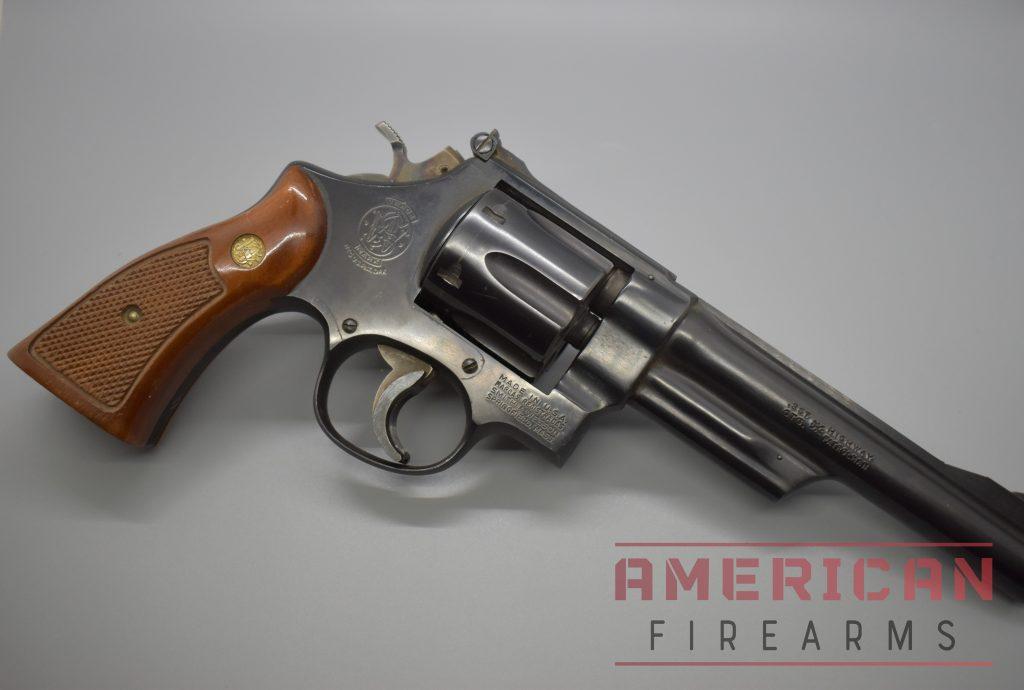
Double action revolvers have external hammers that can be manually cocked and fired in single action mode or fired in double action mode. In double action, the trigger pull weight is much heavier than single action, which gives you a light and easy trigger pull. These are true all-around performers.
Double action only (DAO) revolvers do not have an external hammer, so the only way to fire a round is with double action, but are often designed around concealed carry applications, as the lack of a hammer prevents clothing from snagging on a draw which a more conventional external hammer can produce.
Popular Calibers
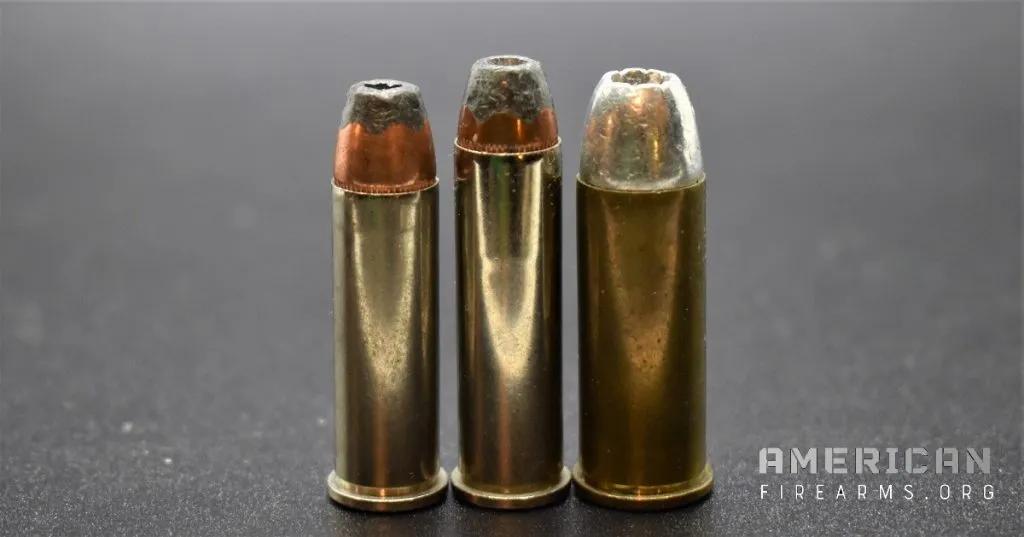
Some of the most popular revolver calibers are .357 Magnum, .38 Special, .44 Magnum, .44 Special, and .45 Colt, with .22LR becoming popular as well. Revolvers are interesting because some chambered in one caliber can also fire other calibers with the same bullet diameter.
For example, a .357 revolver uses the same diameter bullets as the .38 Special (in truth, the .38 Special uses a .357” diameter bullet, the “.38” name stuck because of the case, which was .38” in diameter).
The .357 Magnum is just a lengthened .38 Special case loaded to higher pressure.
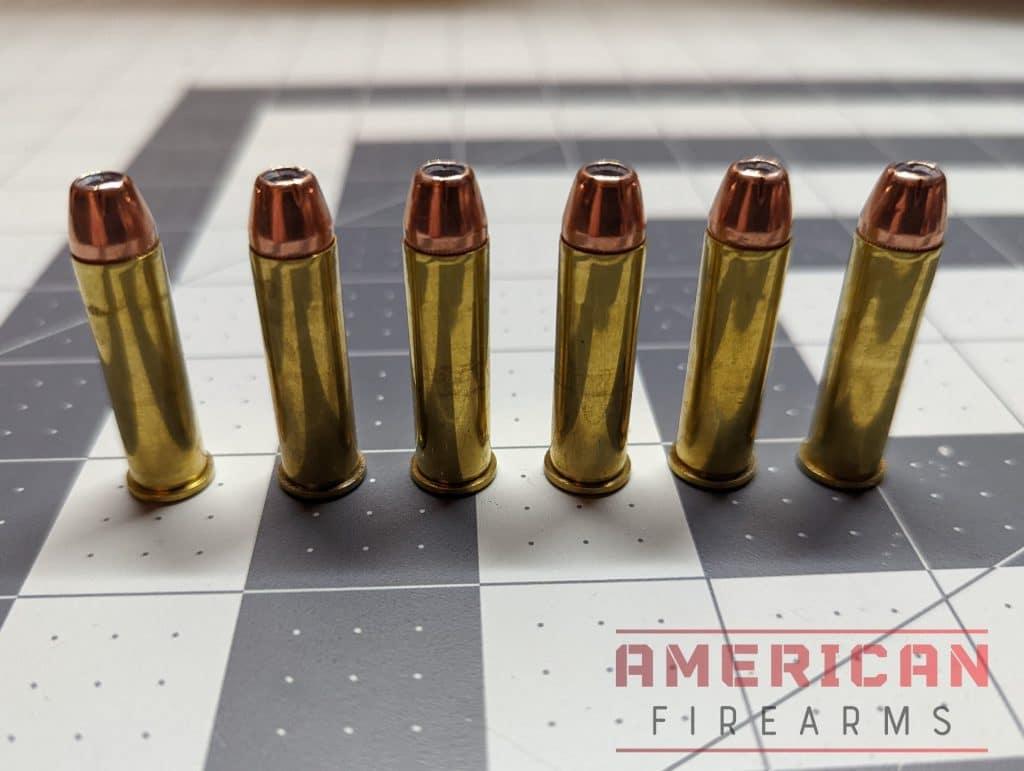
Another example is the .44 Magnum and .44 Special, which share the same interconnection the .357 Magnum and .38 Special have: because Magnums are little more than lengthened cases, Specials can be chambered and safely shot from a Magnum pistol.
Uses
Revolvers have been around for a long, long time, with Samual Colt patenting the basic revolving pistol functionality in 1836.
Wheel guns were used extensively throughout the West and in the Civil War by both the Northern and Southern armies. Probably the most iconic revolver of all time, Colt’s Model 1873 Single Action Army (often called the “Peacemaker”) is credited with a significant contribution to settling the West and is still in production today.
Revolvers today are more commonly used for hunting (much more so than their semi-automatic pistol counterparts anyway). Big game hunters use a variety of revolvers to hunt, but all share a common theme: a large caliber bullet with enough stopping power to make a clean kill.
A few of the more popular hunting revolvers are the Smith & Wesson Model S&W 500, Ruger Super Redhawk .480 Ruger, and the Magnum Research BFR .44 Magnum.
Regarding carry options, double action revolvers make a near perfect handgun to carry on your body, in your pocket, in a purse, or a backpack, provided the limited capacity of revolvers doesn’t deter you from using a revolver for self-defense purposes.
Rifles
What is a rifle?
This is legal definition of a rifle from the ATF:
How does a rifle work?
There are several types of actions when it comes to rifles, but how a rifle fires a projectile is generally the same across them all.
The rifle’s firing pin strikes the primer, which ignites the gunpowder, and begins the process of sending the projectile through the barrel and out of the muzzle. Most semi-automatic rifles use an internal or detachable magazine, eliminating manual reloading between shots.
Break action rifles do not use detachable magazines, and lever actions use either a loading gate or tubular magazine, vs. their magazine-fed kin.
Rifle Actions
Semi-Auto
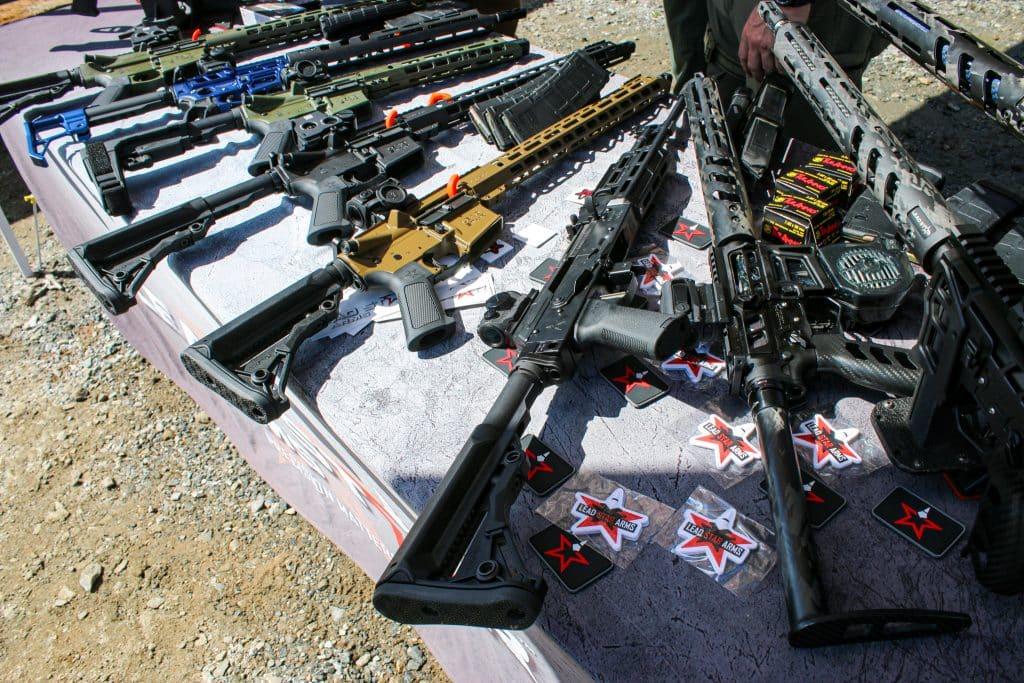
Semi automatic rifles are certainly among the most popular rifles on the market today. These include your ARs, AKs, and other long guns that can fire sequential shots without reloading or manipulating their action.
A semi-automatic rifle is not to get confused with fully automatic rifles. A semi automatic rifle can only fire one round per single trigger pull. Holding down the trigger on a semi-automatic will do nothing beyond the initial shot.
Side Note:
The “AR” in AR-15 is not an abbreviation for “assault rifle.” “Assault rifle” is a misnomer used by the media to associate semi-automatic rifles with automatic weapons. Any rifle which fires rounds sequentially without reloading or manipulating the action is semi-automatic. The AR in “AR-15” rifle stands for “ArmaLite Rifle”, ArmaLite being the company that developed the rifle in the 1950s.
Bolt Action
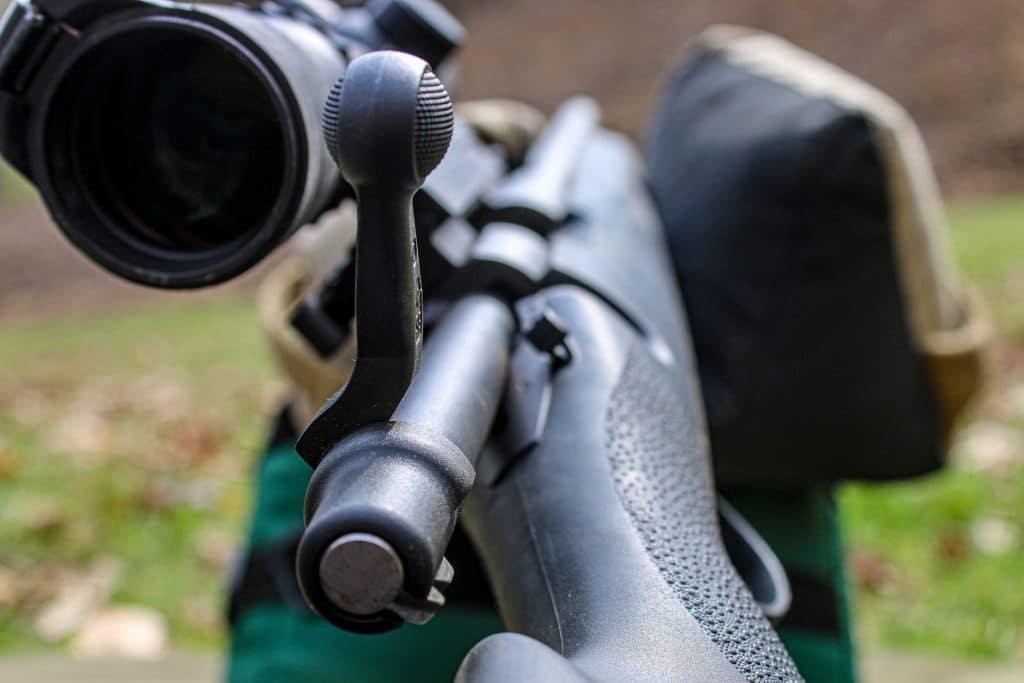
Bolt action rifles are easily identifiable as they have a handle attached to a bolt that needs to be pulled back to load a cartridge. The bolt is then pushed forward by the user to chamber that cartridge (hence “bolt action.”)
A bolt action rifle is similar to a single action revolver, as the user has to manually cock the hammer or manipulate the bolt before they can fire the next shot. Each subsequent shot requires you to work the bolt back and forth with the rifle operating like a single action gun once a round is chambered.
Most bolt action rifles (or “bolt guns”) are used as long-range, hunting, or sniper rifles because they are designed for maximum accuracy. They are also more reliable than semi-automatics, and they give the shooter more control over the loading process.
Gas guns have come a long way in terms of reliability and accuracy, but bolt action rifles almost always outperform them on those fronts.
Break Action
Break action rifles are less popular among long guns, but they have their place. A break-action rifle does exactly what it sounds like; it breaks open to allow you to load a cartridge. Break actions chamber a single projectile at a time, so you have to open the action after each shot to reload.
Manufacturers often underserve left-handed shooters, but break action guns are inherently ambidexterous — they operate the same way for right-handed and left-handed shooters. Break action rifles also allow for longer rifle bullets to be inserted into the chamber, so you can find them chambered in some unique (and often insanely powerful) cartridges.
Lever Action
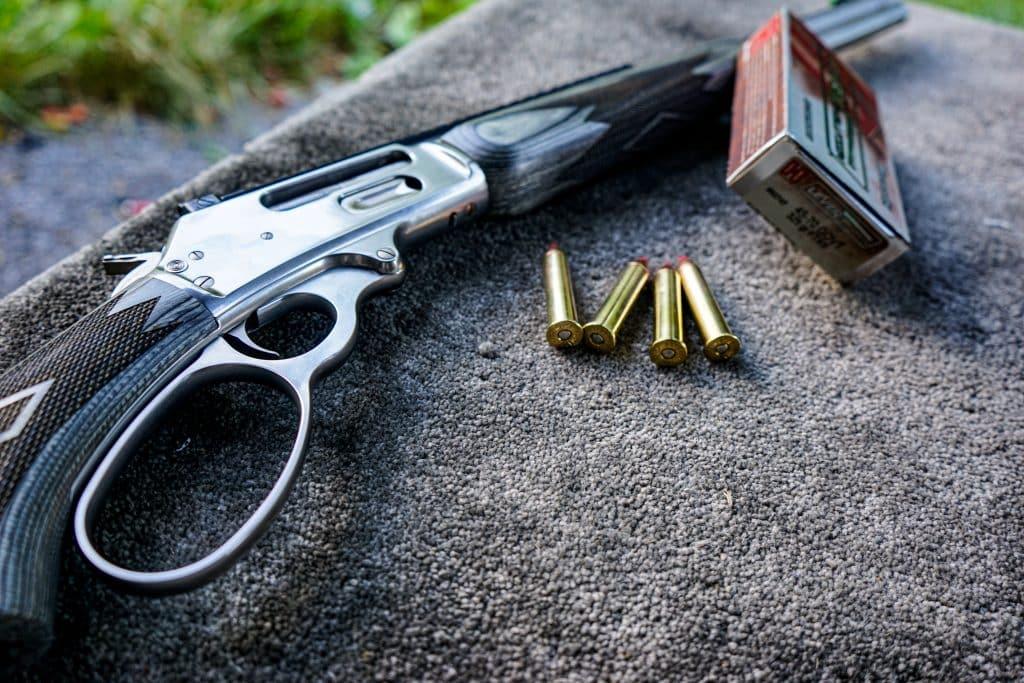
First introduced in 1860 by Benjamin Tyler Henry when he patented the first practical lever-action repeating rifle, lever action rifles are classic firearms by any measure. The Henry Repeating Arms rifles you can see in any Western film are still used today and are among the most popular rifles ever produced. Lever action rifles are similar to bolt action rifles but trade the bolt for a lever.
The lever must be manipulated to load a cartridge into the rifle chamber. When you pull the lever downward, it ejects any spent brass from the chamber, with the upward motion pulling the next round from the magazine tube into the chamber. You must repeat this process for each trigger pull to keep firing the gun.
The magazine on a lever action rifle is loaded using a side gate with some lever actions using a tubular magazine under the barrel, decidedly different from break action or bolt guns. You can also pop a single rifle round into the side of the open action and close the lever to chamber the round.
Popular Calibers
The most popular caliber for semi-automatic rifles is .223 or 5.56, 7.62-mm, .300 BLK, and .22LR. Popular bolt action calibers are .308, .270 Winchester, .30-30, and 6.5 Creedmoor.
Popular break action calibers are .308, .223, .350 Legend, .450 Bushmaster, .45-70 Govt, and .30-06.
Popular lever action rifles are chambered in .357 or .38 special, .30-30, 45 Long Colt, .45-70 Government, and .405 Winchester.
We dive deep into bullets, calibers, and the like in our guide to bullets & calibers.
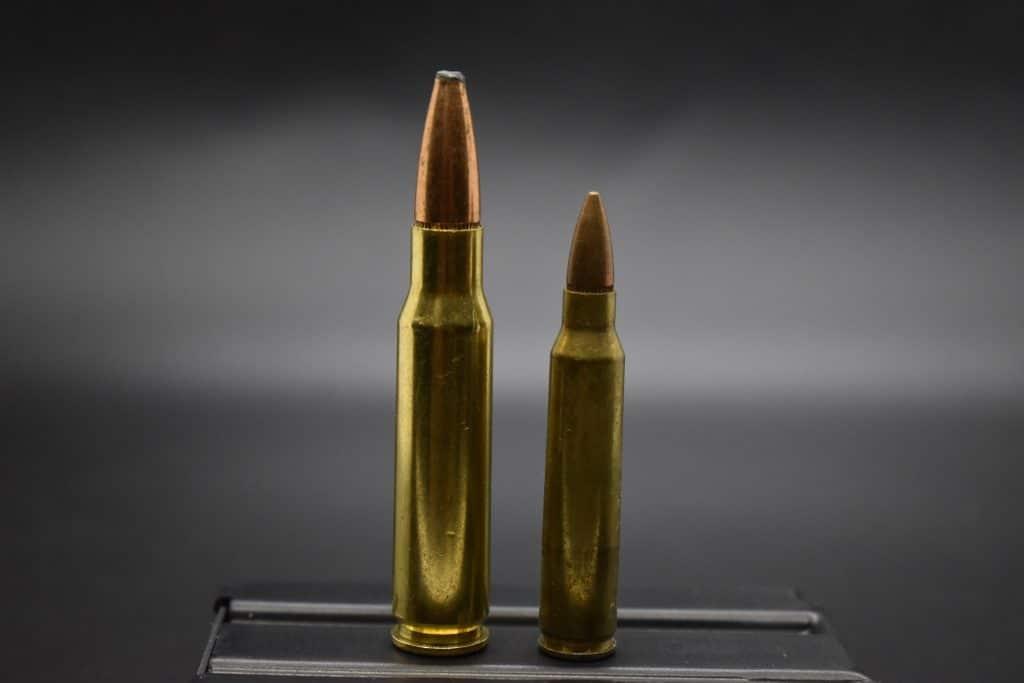
Uses
Rifles have many practical uses, and compared to pistols and shotguns, rifles are the most approachable for people of all ages. Rifles make great starter guns and, especially rimfire or smaller caliber rifles, can have the least amount of felt recoil.
Rifles are also easier to hold, usually much easier to manipulate, and less intimidating than learning how to shoot on a pistol or shotgun.
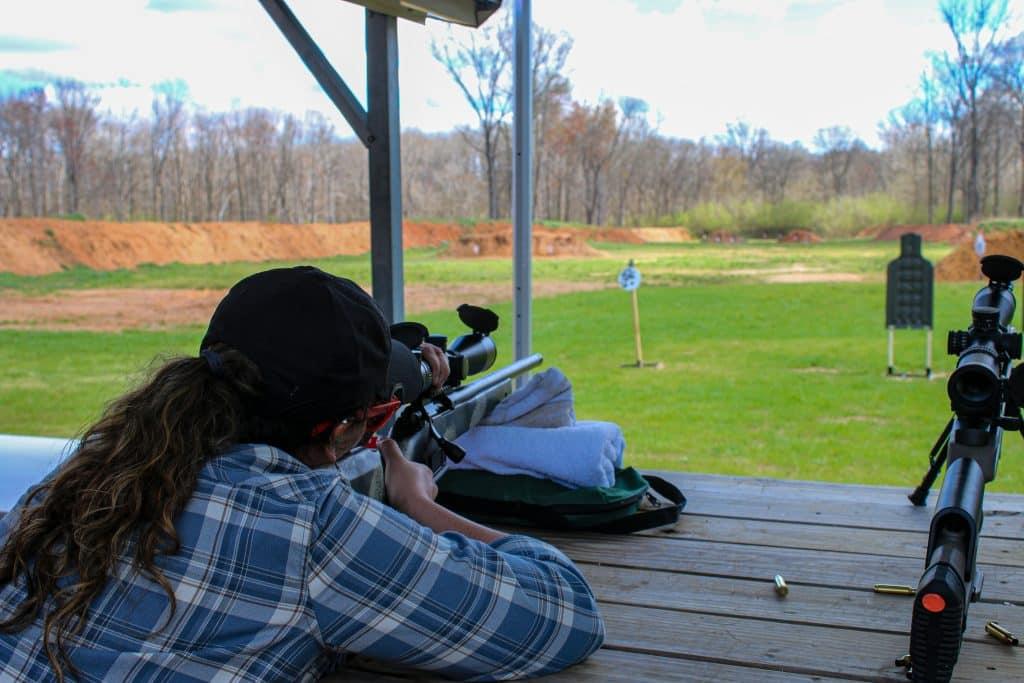
For many of us, our first rifle was a pellet gun, or maybe these days, an airsoft rifle. The next step up from these guns is a .22LR rifle, and for good reason. The .22LR is a very real cartridge — just ask anyone who needs to tackle varmint problems on the regular — but lacks the kick and noise of centerfire rounds.
Branches of the military use semi-automatic rifles and sniper rifles, among other guns like submachine guns and heavy machine guns, and rifles have been used in wars for generations.
Beyond warfare and household use, rifles are very popular in shooting sports such as 3 Gun, PRS, NRL22, 2 Gun, Steel Challenge, and more. These events are hosted all across the country at a shooting range near you.
Rifles are also the most common firearm used for hunting wild game, thanks to the available distances they can shoot (much, much further than pistols and shotguns), with projectiles that carry more power, use more precision, with large bullet diameters that make for clean kills.
Rifles can also be used for self-defense as a home defense or truck gun while traveling, with certain considerations like caliber and length, as overpenetration with a rifle is a very real risk.
Shotguns
What is a shotgun?
The legal definition of a shotgun from the ATF is:
How do they work?
Shotguns work similarly to striker-fired pistols in that they have a firing pin held under spring tension when the action is worked.
Pulling the trigger releases the firing pin which strikes the primer of the shotgun shell and begins the firing sequence — moving bird shot, buckshot, or a slug down the smooth-bore barrel and out the muzzle.
Shotgun Actions
Pump Action
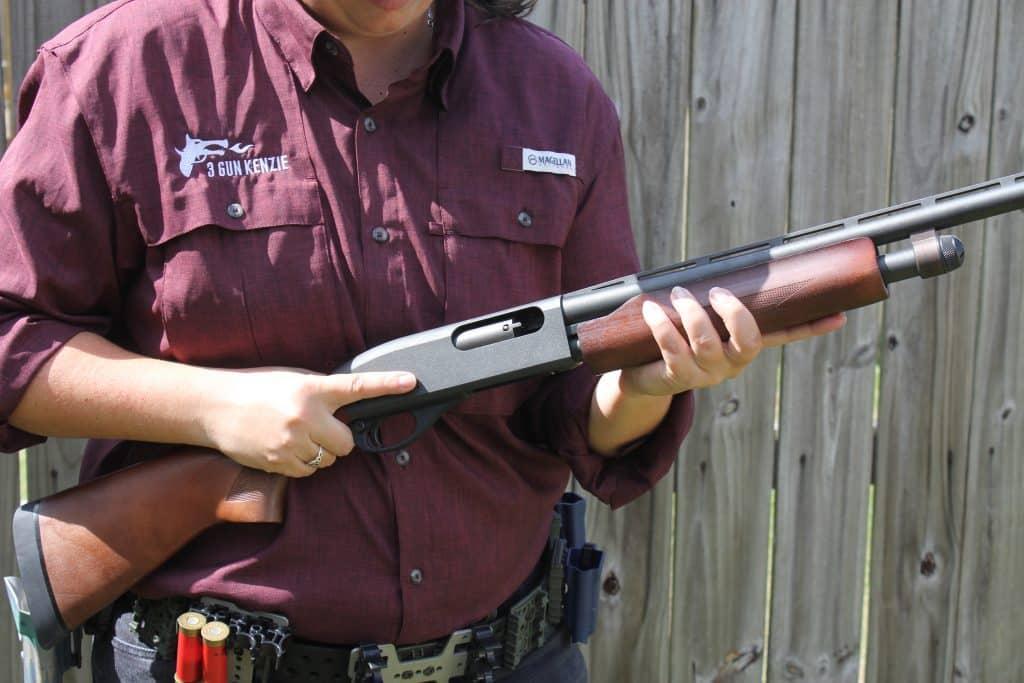
Pump action shotguns are the classic, all-American “get out of my house” tool, as at home with sportsmen as they are in the back of squad cars — all of which use the same system because it simply works.
Loaded and unloaded by “pumping” the gun, pump action shotguns have a moveable fore-end that slides forward and backward, connected to a breech bolt. When the fore-end is pulled backward by the user, it works the action, opens the chamber, cocks an internal hammer, and pushes a shell out of the magazine.
By pushing the fore-end forward, the shell in either a tubular or box magazine is elevated by a shell carrier and pushed up and into the chamber by the bolt face, ready to fire.
Pulling the trigger fires the shell in the chamber, and then the process of pumping the shotgun slide is repeated for each subsequent shot.
While not as fast as semi-auto shotguns, with practice, this process of racking and firing can occur incredibly quickly, and produces a satisfying “chunk chunk” sound that, for some of us, is half the fun.
Beyond the reliability and fun factor, pump action shotguns don’t suffer from any minimum shell power requirements — you can more or less fire any shell variety or load, provided the chamber can accommodate the shell length.
While trusty and flexible, the reciprocating bolt housed in the receiver will produce longer overall gun length than some other types of action, such as break action, although a pump shotty will provide more than twice the capacity.
Semi-Auto
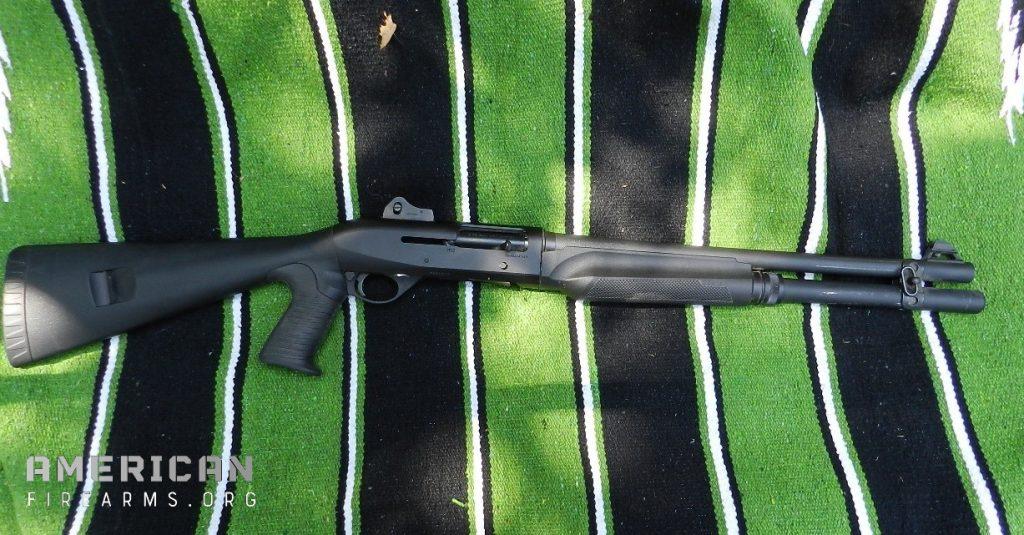
Semi-automatic shotguns are a bit like slide-action shotguns, just without the pumping. These are very popular due to their speed of firing and often softer recoil impulse. A semi-automatic shotgun fires a round, ejects the spent shell, and reloads the next shell without any input from the user (other than pulling the trigger.)
When the trigger is pulled, these shotguns fire a single shell and then use either recoil energy or gas pressure to drive the breech-bolt rearward, compressing a spring that returns the bolt and shoves the next round into battery in one swiftly coordinated series.
The trigger must then be released and reset to fire the subsequent shot. Semi-automatic shotguns can be magazine-fed or tube fed, with actions that are gas or inertia driven.
Gas-Driven Shotguns
Gas-driven shotguns like Beretta’s are very user-friendly because they function and fire even if your shooting technique is not perfect. They are run by an internal gas system like semi-automatic rifles. Intertia shotguns are more prone to jams if you do not hold the gun correctly.
Inertia-Driven Shotguns
An inertia shotgun uses the energy of a fired shell to force the bolt backward and forwards, chambering the next round. Inertia-driven shotguns, like Benelli’s, are faster and usually a lot simpler in design.
Whether gas or inertia driven, all semi-autos require a shell that can provide adequate power to cycle the action successfully. While less of an issue today, given the decades of R&D which have gone into so-called “gas gun” design, this is still an area of contention for some.
Since gas guns use propellant pressure to cycle the action, they can raise the specter of additional maintenance and reliability concerns. While valid, consistent maintenance should be on everyone’s agenda, which nine out of ten times will alleviate any reliability issues.
Break Action
A break action shotgun can have one or more barrels, either in a single-shot, Over/Under (O/U) or Side by Side (SxS) style. A break action shotgun “breaks” open with a hinged action, unlocked through the depression of a tab or swinging a lever. The barrel tips down, elevating the rear end, which enables the user to load and unload shells from the chamber.
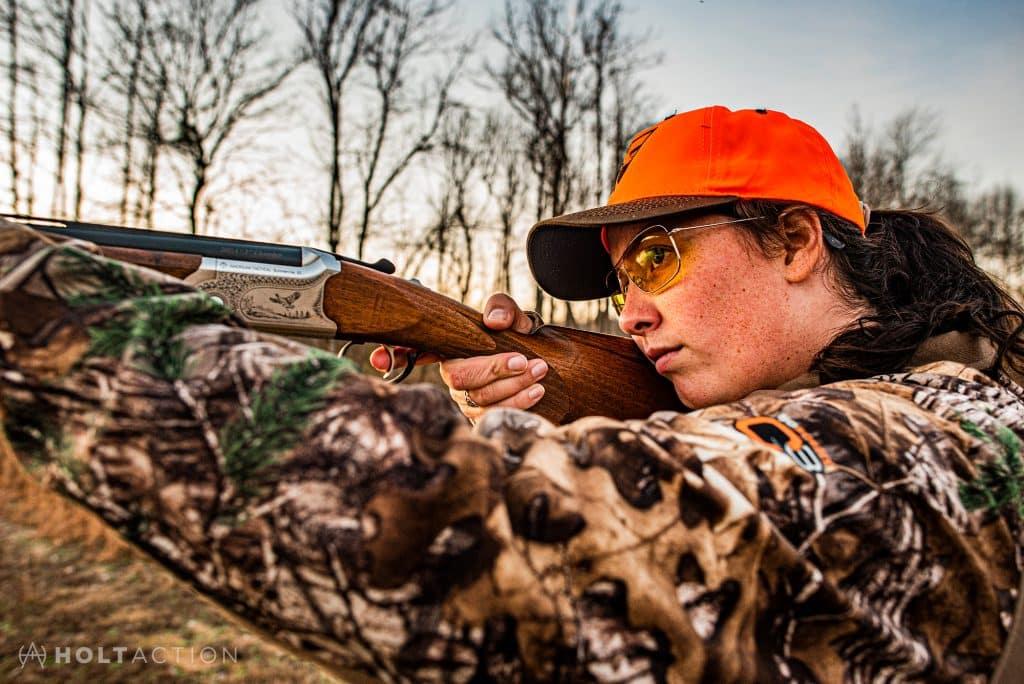
Opening the break action resets the action such that when you close it the shotgun is ready to be fired. Some include hammers which need to be cocked manually before firing. Break action shotguns with two barrels will either have a single or a double trigger.
In the event of a SxS or O/U single trigger requires two separate trigger pulls to fire the shot out of each barrel. A double trigger will require you to pull one trigger to shoot one of the barrels and the other trigger to shoot the other barrel.
The break-action design is straightforward and incredibly reliable. Many guns in the category are real works of art and can be very expensive — especially when it comes to tournament guns or mantle-piece-worthy heirloom works.
That said, plenty of utilitarian break actions are available, often designed for beginners in smaller gauges. Their simplicity means many break actions are light with the trade-off of ore recoil than heavier or more complicated actions.
Of course, depending on the barrel orientation, you may only get a single shot, so capacity is not a strength.
Lever Action
Lever action shotguns are few and far between, but these oddballs do exist like the long defunct Winchester repeating M-87.
Lever action shotguns work the exact same way as a lever action rifle. The lever has to be pulled down and up to open and close the gun’s action. The lever is what resets the trigger and allows you to fire the gun.
Popular Gauges
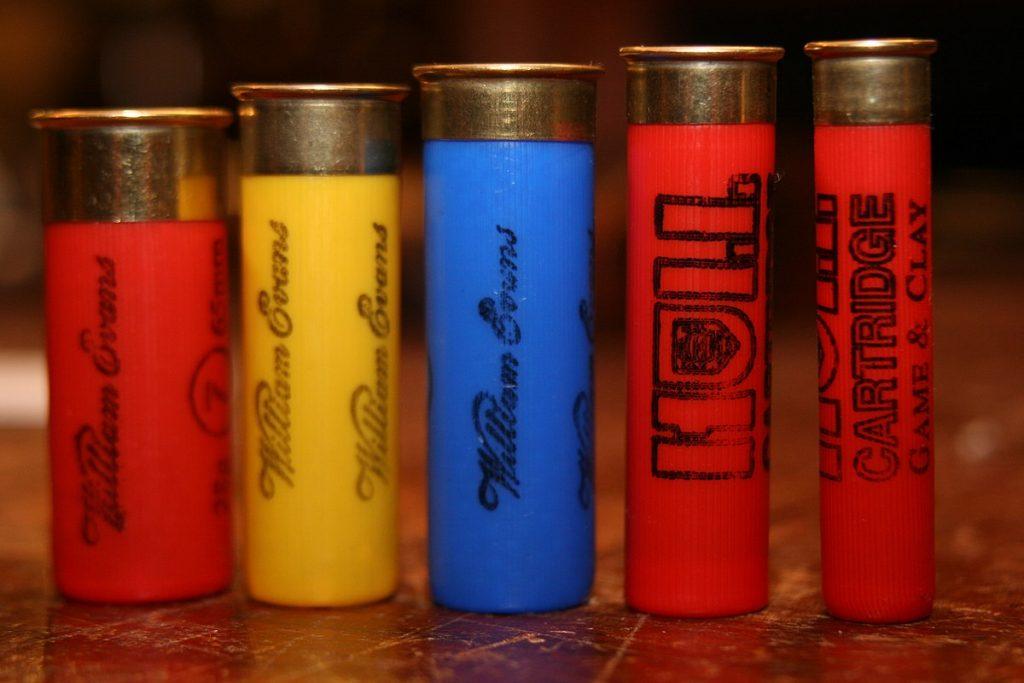
In what may seem backward, a 12 gauge is bigger than a 20 gauge which ties back to the British system used to “gauge” a shotgun barrel. The gauge is derived from the number of lead balls matching the barrel diameter that would equal a pound. For example, one 16 gauge lead ball would weigh a single ounce. A 12 gauge lead ball would weigh 1 ⅛ ounce and you’d need 12 to reach one pound. Simple really.
The very most common shotgun gauges are 12 gauge and 20 gauge, which offer the widest support and variety of shot loads. Less popular gauges are 10, 16, 28, and 410 (which isn’t actually a gauge at all, but a caliber) — most of which being relegated to specialty applications.
Both 12 and 20-gauge shotguns will use 2 ½” Standard or 3” Magnum shells, with 12 gauge also supporting the newer 3 ½” Super Magnum, designed principally for delivering a massive amount of pellets to waterfowl targets.
Uses
Often the first gun to go into a new safe, the reliability and sheer amount of damage on tap make shotguns great home defense guns. The pump action shotgun is one of the more reliable firearm designs ever conceived, and a shotgun can also make a great truck and travel gun.
Shotgun shooting sports have been around for centuries. Skeet, trap, and sporting clays are played around the world. Shotguns are also used in 3 Gun shooting competitions, along with rifles and pistols. You also see competitive shotgun shooting at the Olympic level.
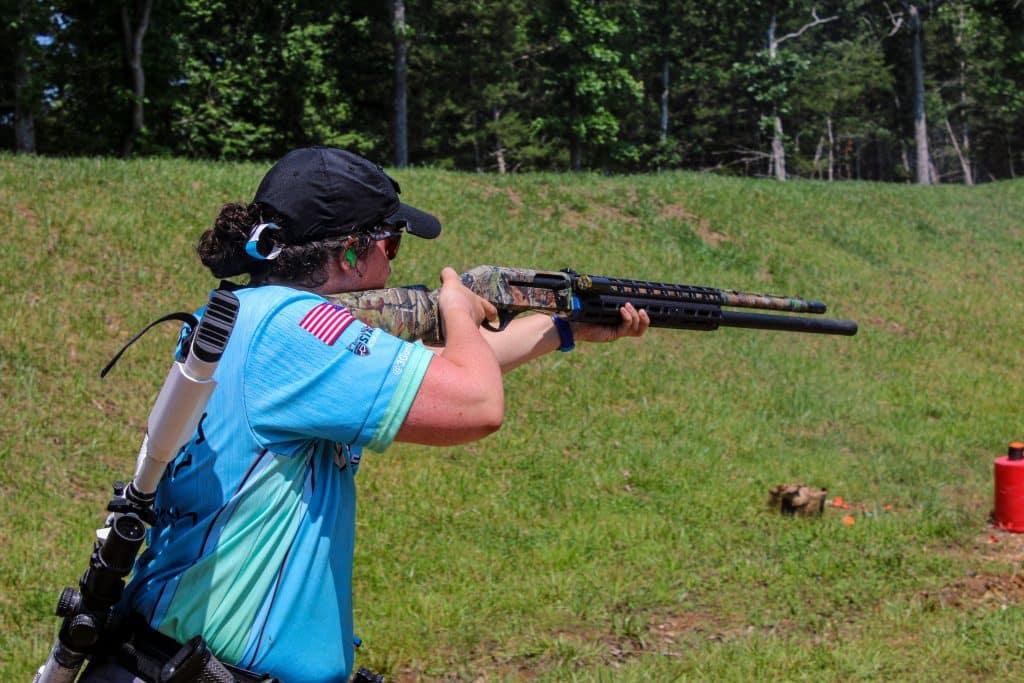
Shotguns are used for hunting various species of birds and even deer. Ammo manufacturers make shotgun loads specific for hunting doves, ducks, turkey, deer, and more.
Starting a new shooter off with a shotgun is not the best idea unless it’s a smaller caliber shotgun like 20 gauge, for example. No matter the shotgun’s gauge, anyone shooting a shotgun needs to learn how to put their body weight behind the gun, how to shoulder a shotgun correctly, and be prepared for the felt recoil.
I have learned a few shotgun shooting tips over my years of shooting experience and from teaching others. Smaller people, for example, need a more aggressive forward-leaning stance when using a shotgun. A good example is a fighter’s stance, with the shooter’s weight on their toes while leaning forward to shoulder the punch.
Most shotguns do not have a rear sight — which means your rear sight is your dominant eye. If you do not have a proper cheek weld on the gun stock and fail to line up your eye with the front sight, your shots will be off.
Consider using light target loads with lower velocities when learning how to shoot a shotgun, rather than starting off with buckshot or slugs that kick much harder. Your shoulder will thank you.
Want more on shotguns? We break down the 5 types of shotguns for ya.
“Machine Gun” Nomenclature. What’s the Difference?
Machine guns have been around since the late 1800s, used by various militaries, but some types of machine guns can be legally owned by private citizens provided the firearm was made before 1986. The Maxim machine gun, a recoil-operated machine gun invented in 1884 by Hiram Stevens Maxim, was the first machine gun in the world. You could conceievably own one (provided you could afford one should it be made available on the open market.)
A machine gun is defined as an automatic weapon that fires bullets in rapid succession for as long as the trigger is pressed — until you run out of ammunition. Machine guns are divided into categories: submachine, heavy machine, and light machine guns.
Submachine Guns
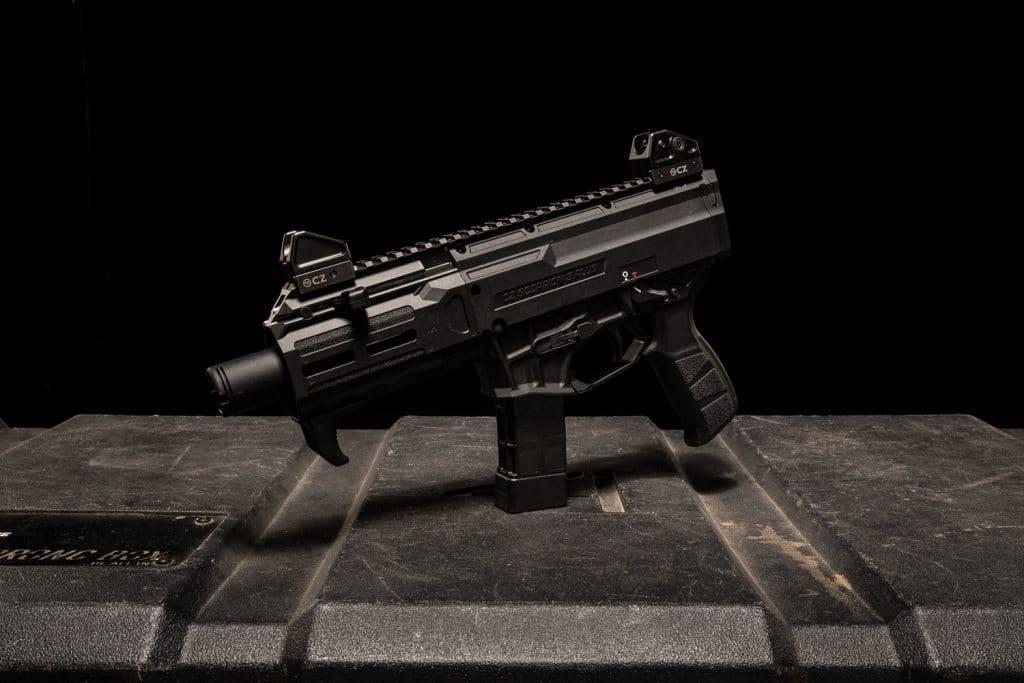
Submachine guns are semi or fully automatic magazine-fed machine guns designed to fire handgun-caliber cartridges.
One of the most popular submachine guns is the Heckler & Koch MP5. A blowback-operated roller-delayed firearm chambered in 9mm. It’s accurate, reliable, and iconic. Beyond 15 and 30-round capacity magazines, it’s also compatible with 100-round drum magazines.
A few examples of other handgun-sized automatic weapons in this category are the Mac-10, Uzi, and Beretta PM12. These submachine model guns have pistol grips and are closer in size to a full-size pistol than a rifle.
Machine pistols made by modern firearms manufacturers are also popular submachine guns. For example, the Glock 18 is a true fully automatic pistol with an external fire selector one can use to switch from semi-automatic to full-automatic firing mode.
Light Machine Guns
Light machine guns are magazine-fed, rifle caliber, and bipod fired. One such light machine gun that the British developed is the Bren Mk I machine gun, produced at the end of 1937. It fires 500 rounds per minute, with an effective firing range of 550 meters, and is fed with 30-round magazines.
Another such weapon that was adopted by the British army was the Lewis Machine Gun. The Lewis was a lot lighter than previous machine guns, using a finned radiator fitted beneath a steel shroud to air-cool the gun. When fired, this created a ‘venturi’ effect, sucking the hot air forwards and drawing colder air in behind it.
It fired 550 rounds per minute and used a drum magazine that offer much more capacity than standalone magazines.
Heavy Machine Guns
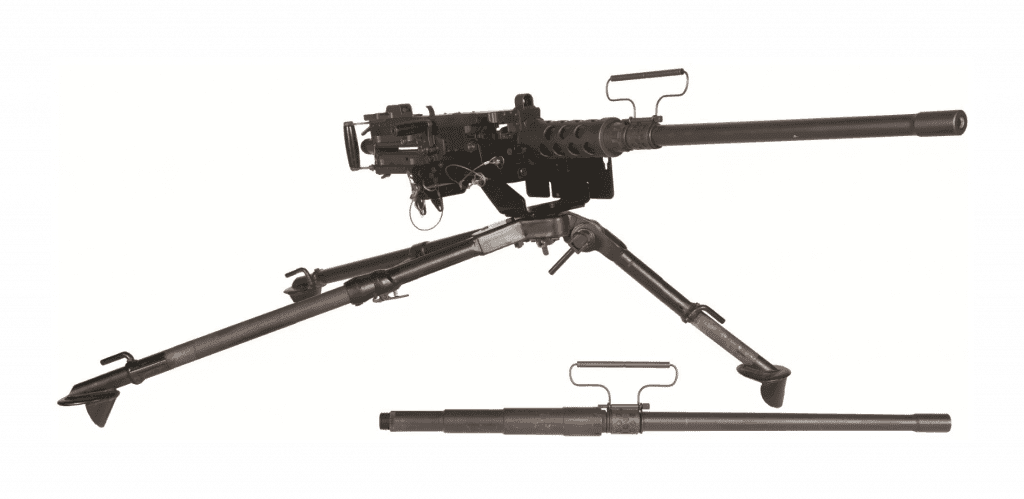
Heavy machine guns are belt-fed, extremely heavy, hard to transport, are fired from a tripod or vehicle mount, and are usually water-cooled. You see these military-style firearms on warships, tanks, helicopters, and other machinery where artillery is needed.
Some examples of heavy machine guns are the M240B, M1919 Browning, and Browning M2 – Ma Deuce. The M240B has been used by U.S. Armed Forces for years by all branches of the U.S. military. It has a long life, is reliable, and has a more extended range than most machine guns.
The M2 Machine gun is a heavy machine gun that uses a larger and more powerful .50 BMG cartridge. This early automatic weapon has served in every major conflict, and war the US has been involved in from WWII, the Korean War, the Vietnam War, Desert Storm, the Gulf War, Operation Iraqi Freedom, Operation Enduring Freedom and is still being manufactured today.
Its armor-piercing bullets make it one of the most deadly machine guns in any conflict. Light steel armor is no match for heavy machine guns.
Further reading
If interested in becoming more familiar with the ATF and the legalities of various firearms, it’s a good idea to spend some quality time with the Nationals Firearms Act.
NFA items such as suppressors and short-barreled rifles are subject to a $200 tax stamp and additional steps you must go through to gain possession of these items.
Always follow the four rules of firearm safety when handling any gun to stay safe at the shooting range. Remember to have fun and always wear eye and ear protection!
Sign up for our newsletter
Get discounts from top brands and our latest reviews!

